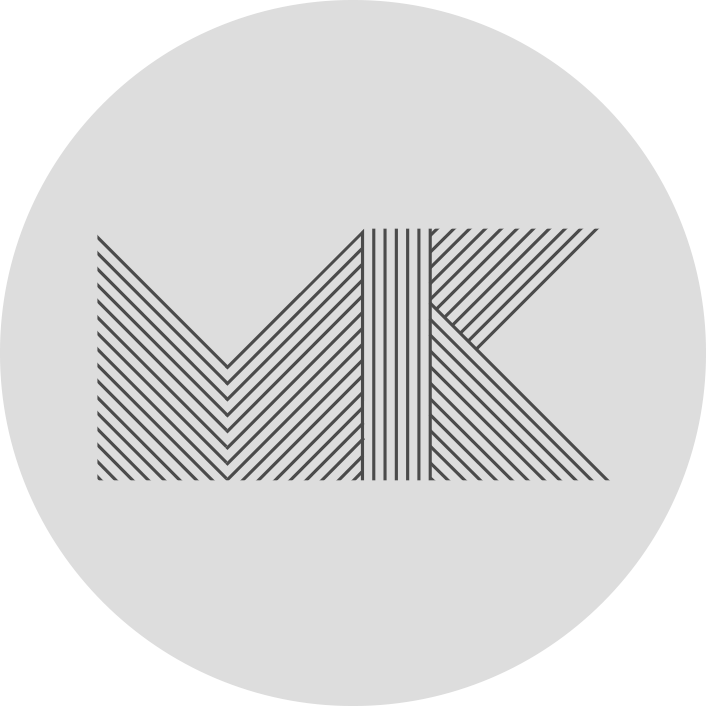THIS LEARNING JOURNAL IS A TOOL USED TO DOCUMENT THE DESIGN, RESEARCH AND THOUGHT PROCESSES BEHIND MY PROJECT
Site visit 1 - 26/09/19
Today was spent walking the site from Kenidjack Valley to Cape Cornwall then all the way up to Geevor Tin Mine, taking in the breathtaking scenery of the harsh, scarred, human effected landscape.
The views got me thinking of utilising the power of the sea and somehow using it for my device, but with little access down my thoughts drifted towards harnessing the wind as the conditions I experienced were 3 days worth of weather in 1, as is traditional in Cornwall!
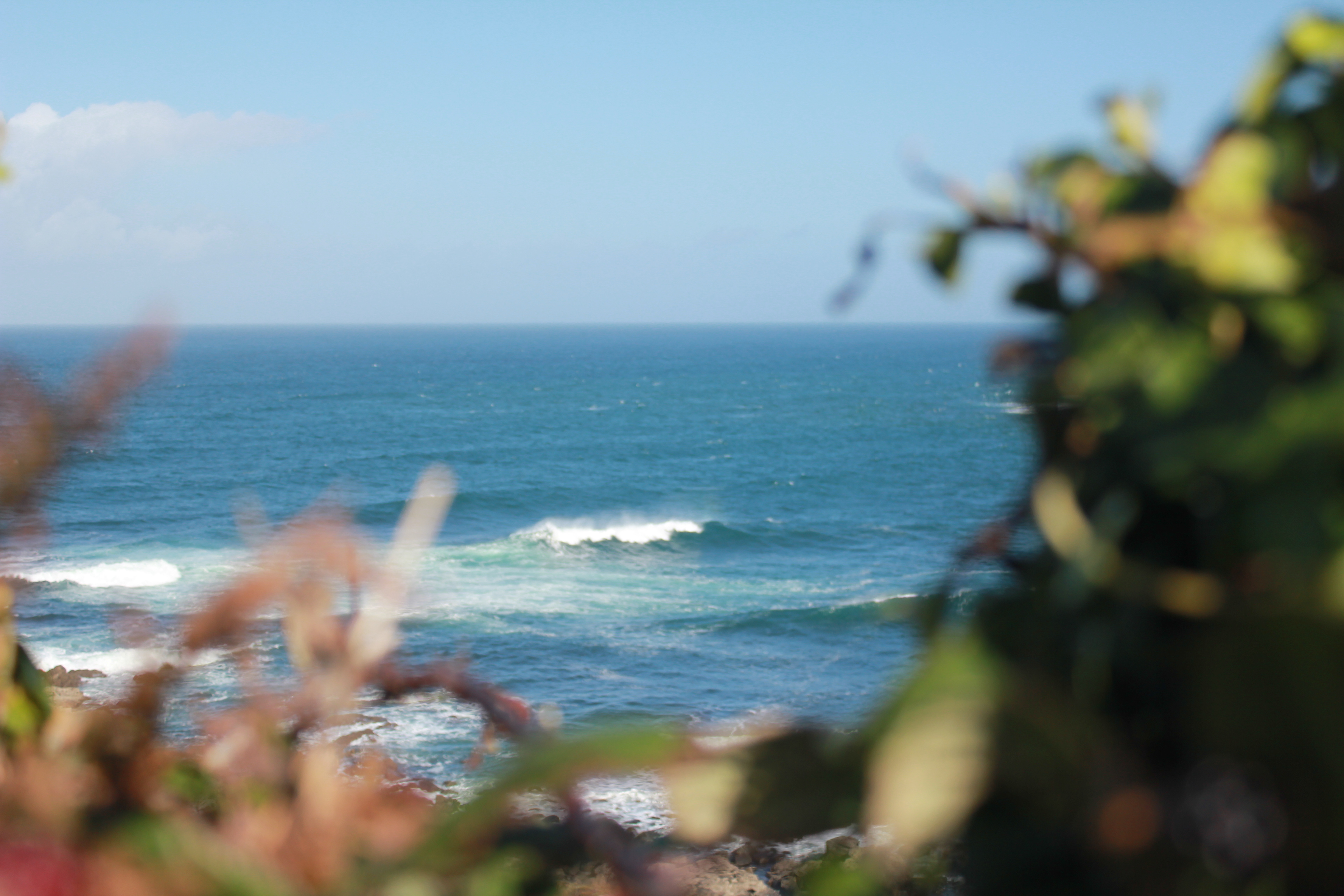
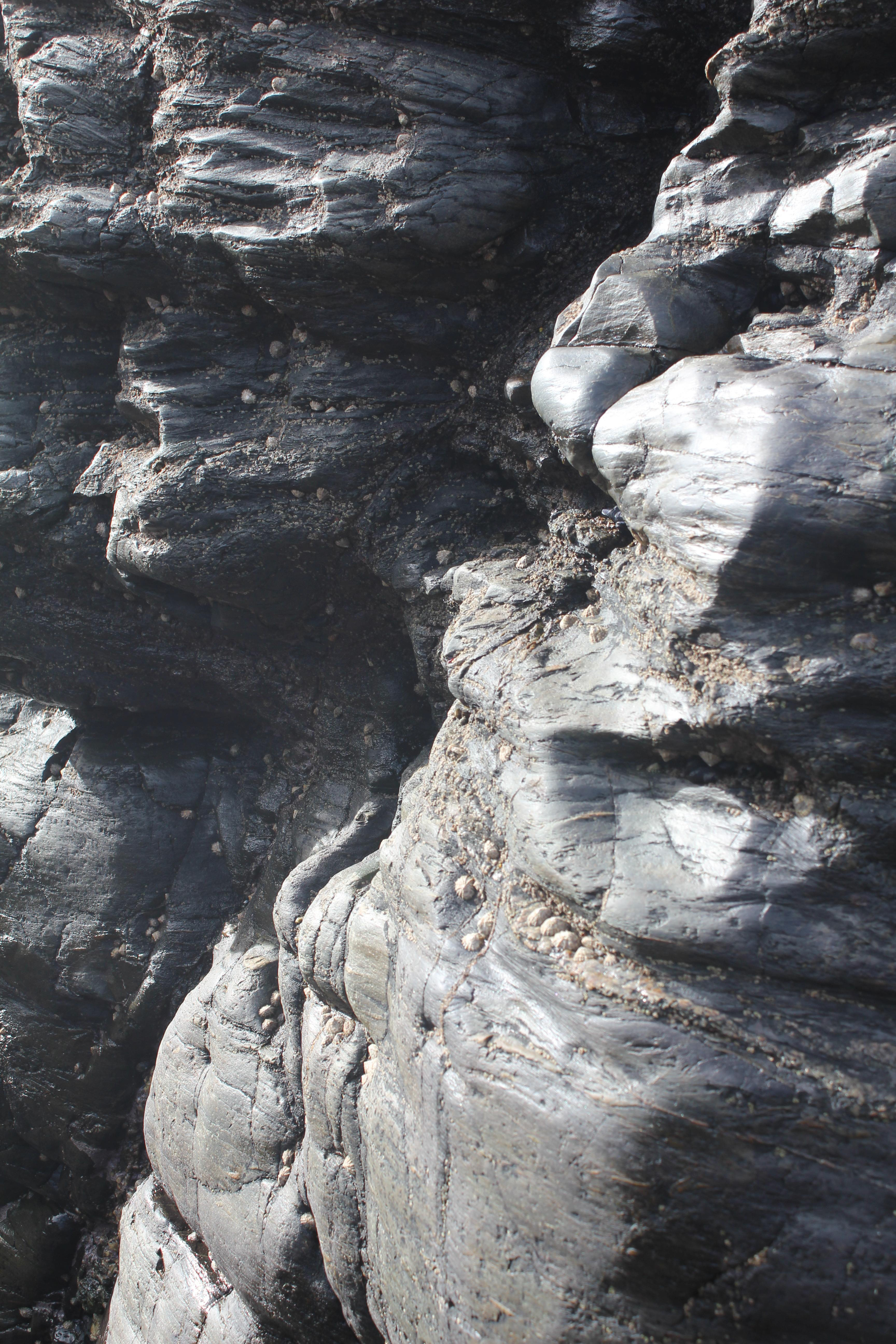
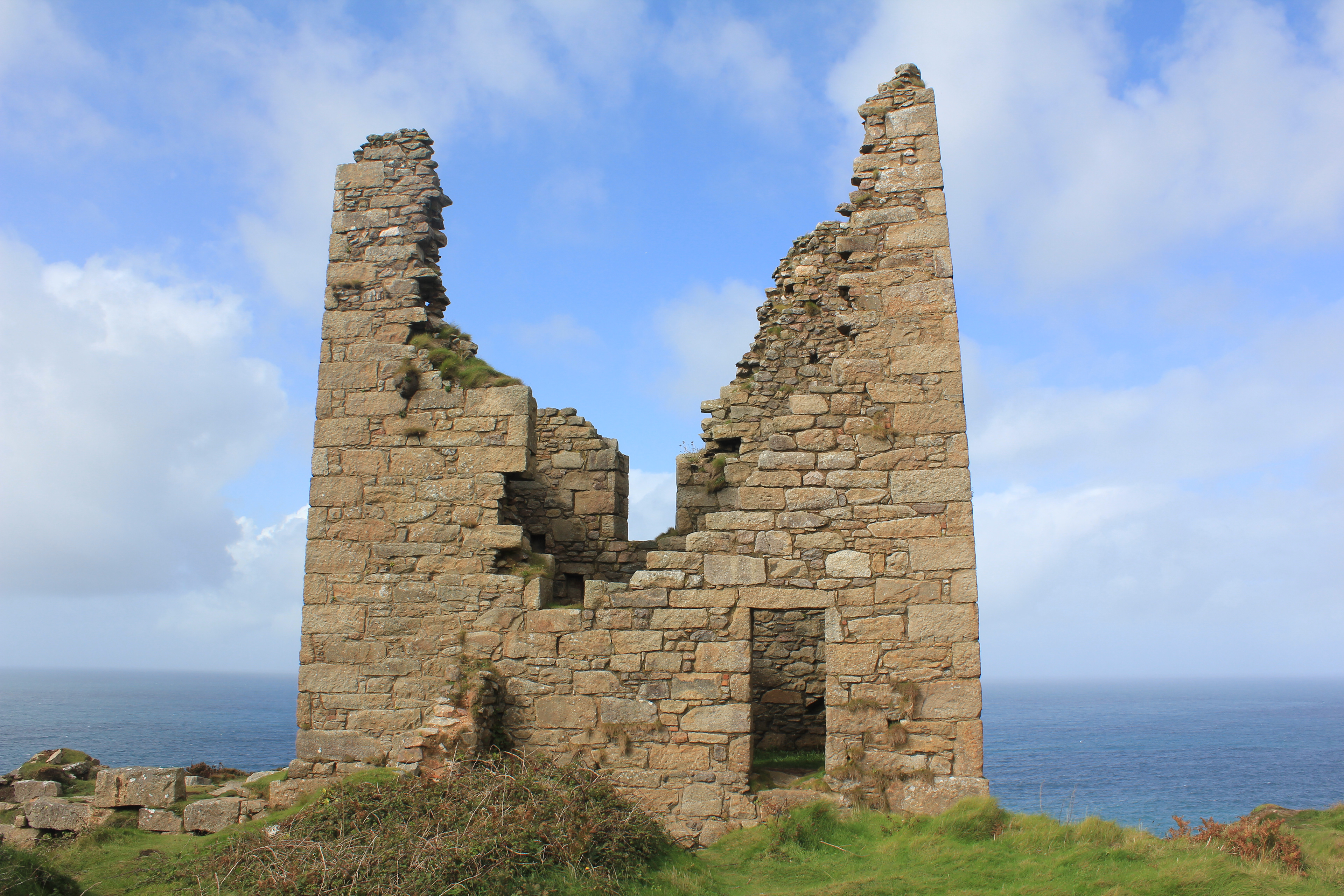
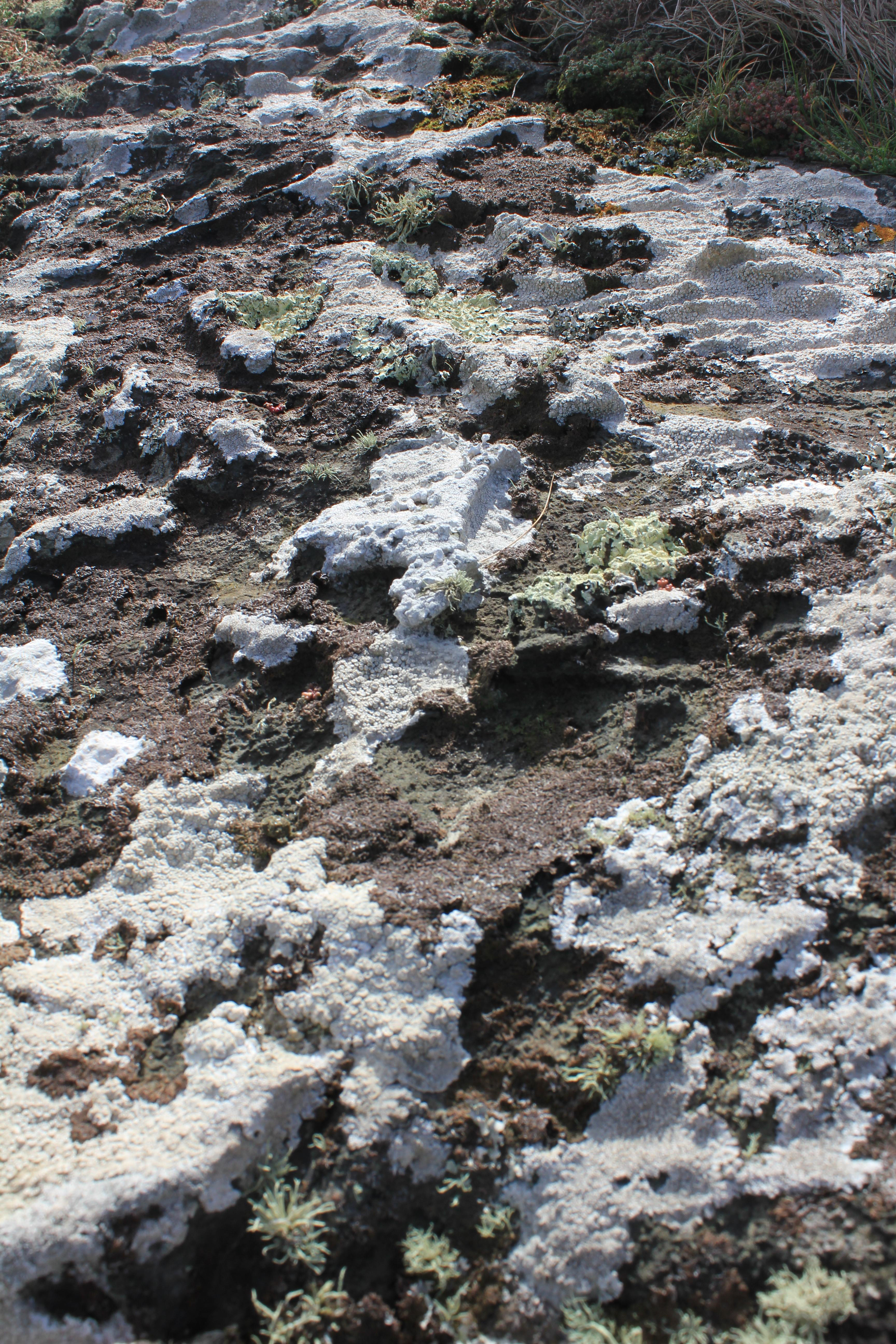


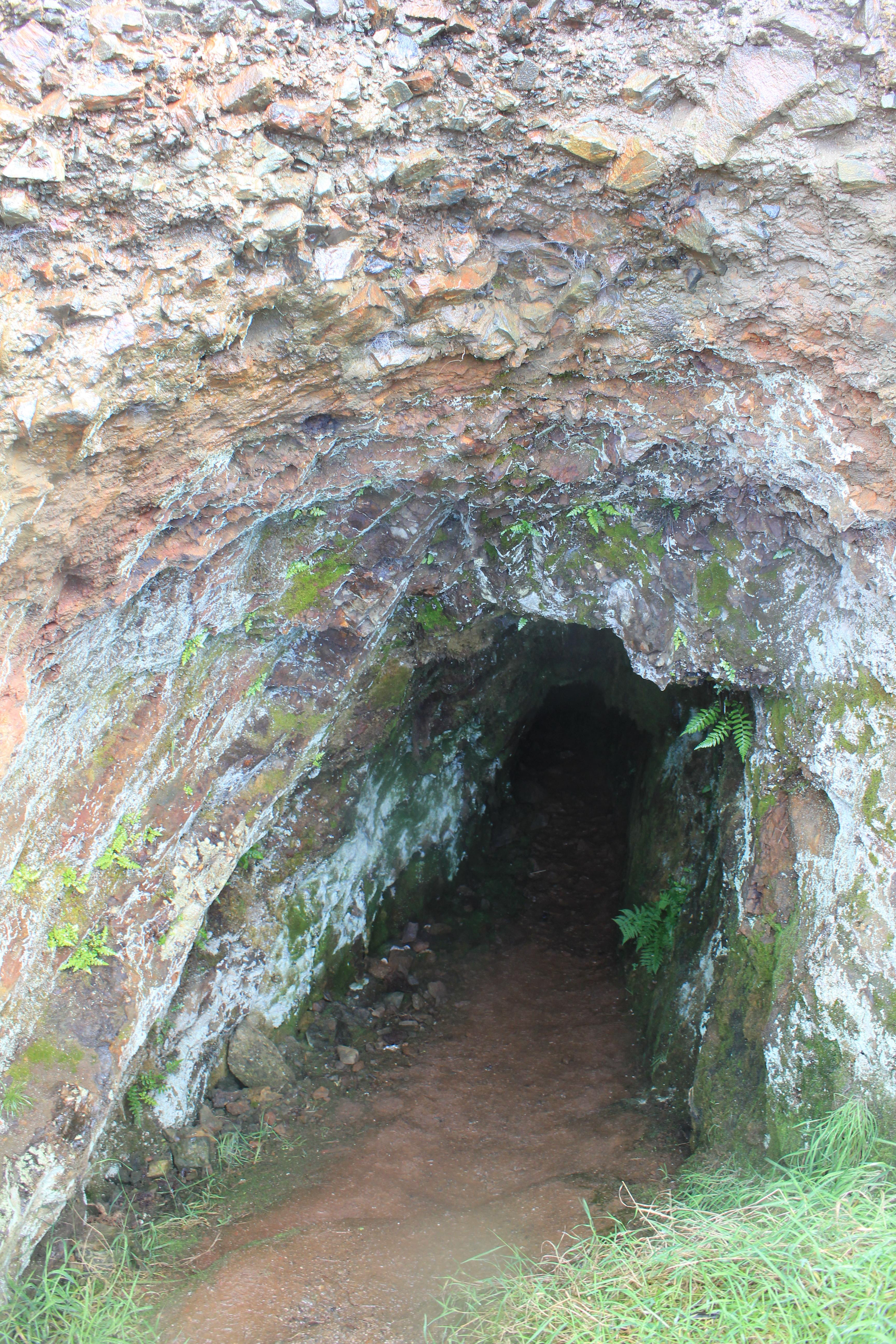
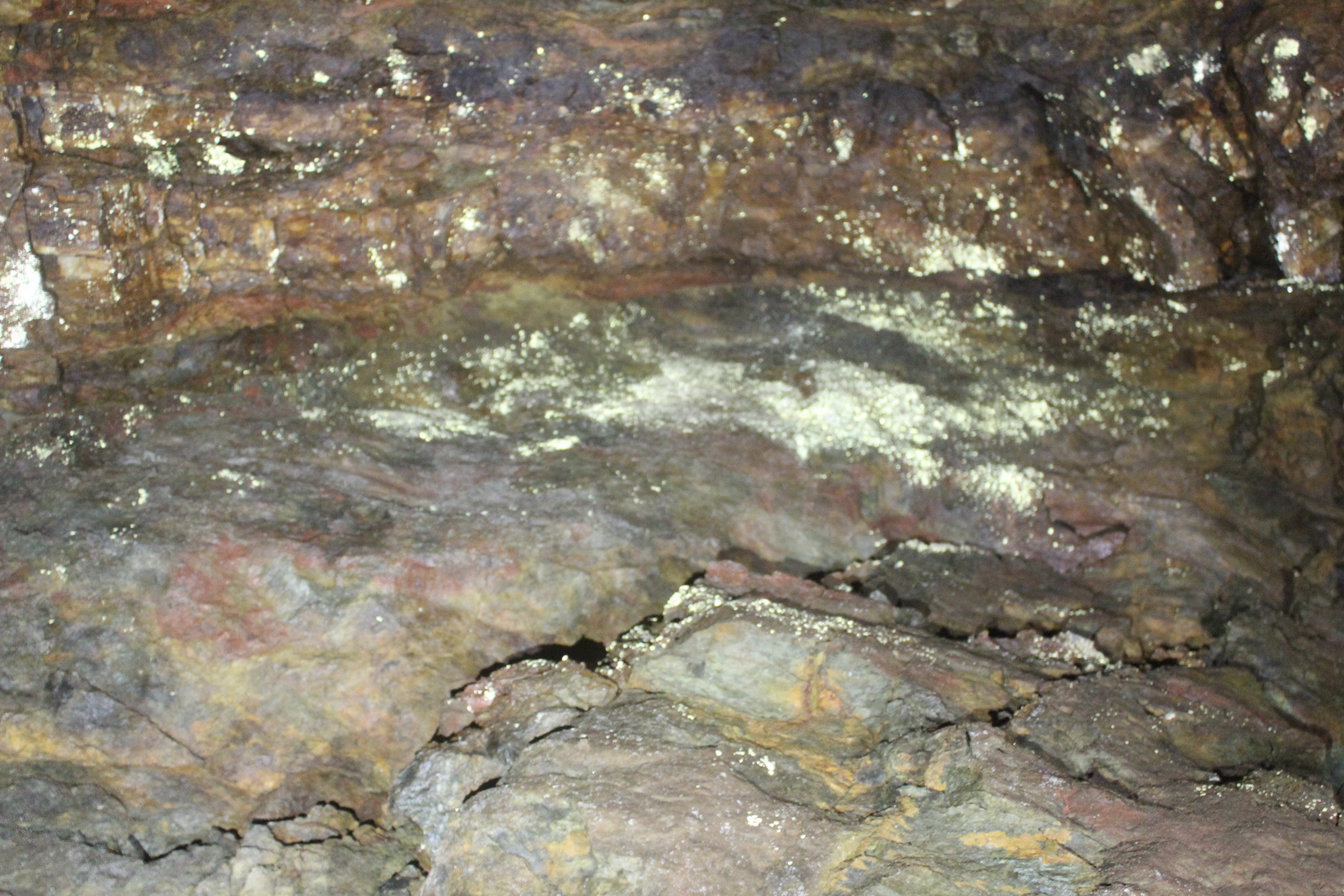
Site visit 2 - 27/09/19
With more time to scour the coastline I decided to start at the Northern extreme of our site at Pendeen Watch. With a bit of online research last night I found Boat Cove just to the north, re-enlivening the idea of a tide or wave driven device. There were inlets and gullies carved from the veins in the rock by the sea that I could use to drive the machine, but I got drawn to a tidal pool near the boat ramp which had steps down to it. The beauty and tranquility of it really stood out in the wind and rain battered conditions. With my go pro I managed to get some shots from the other world under the water. The colours and light transition were unbelievable easily the most impressive piece of the coast I've discovered.
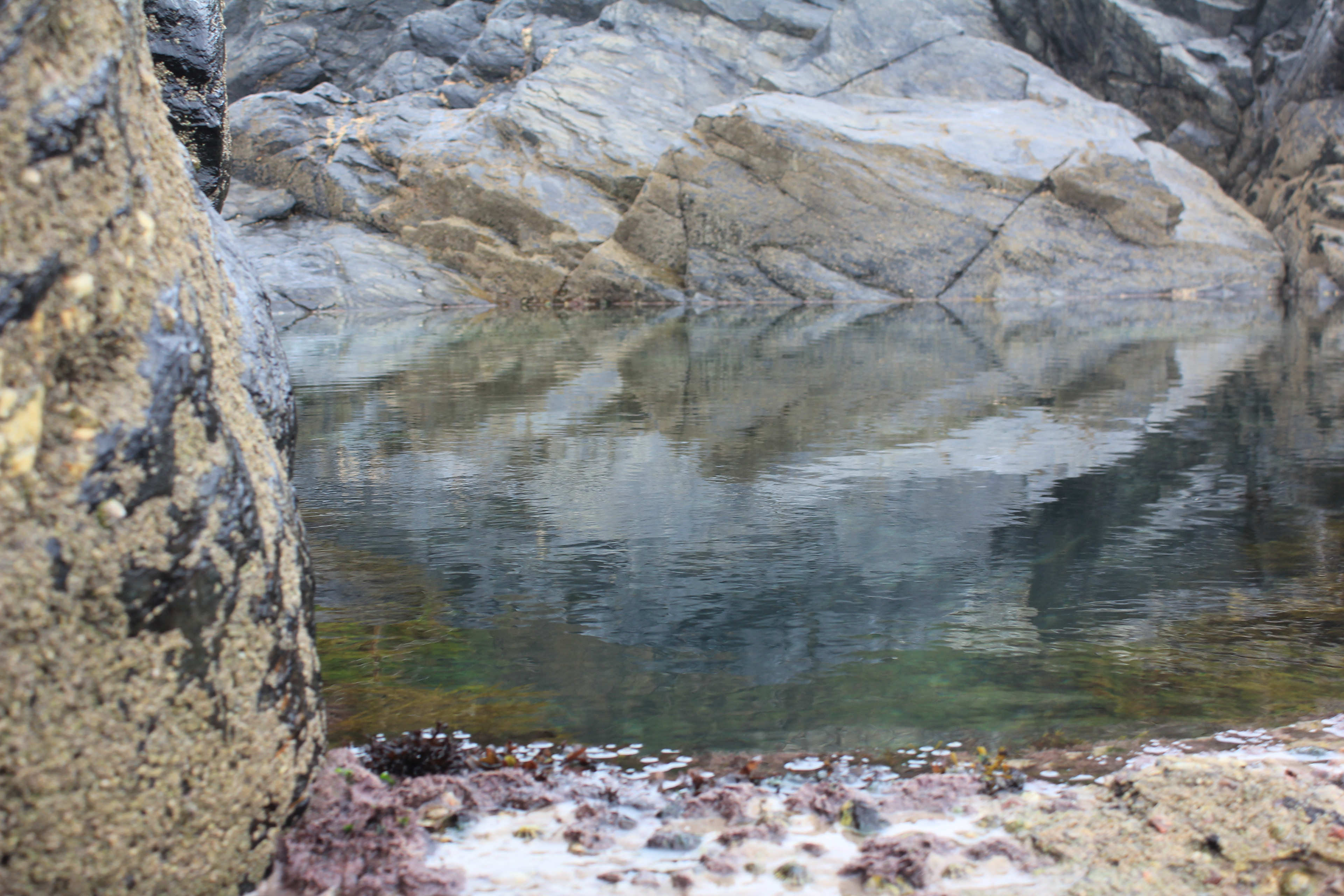
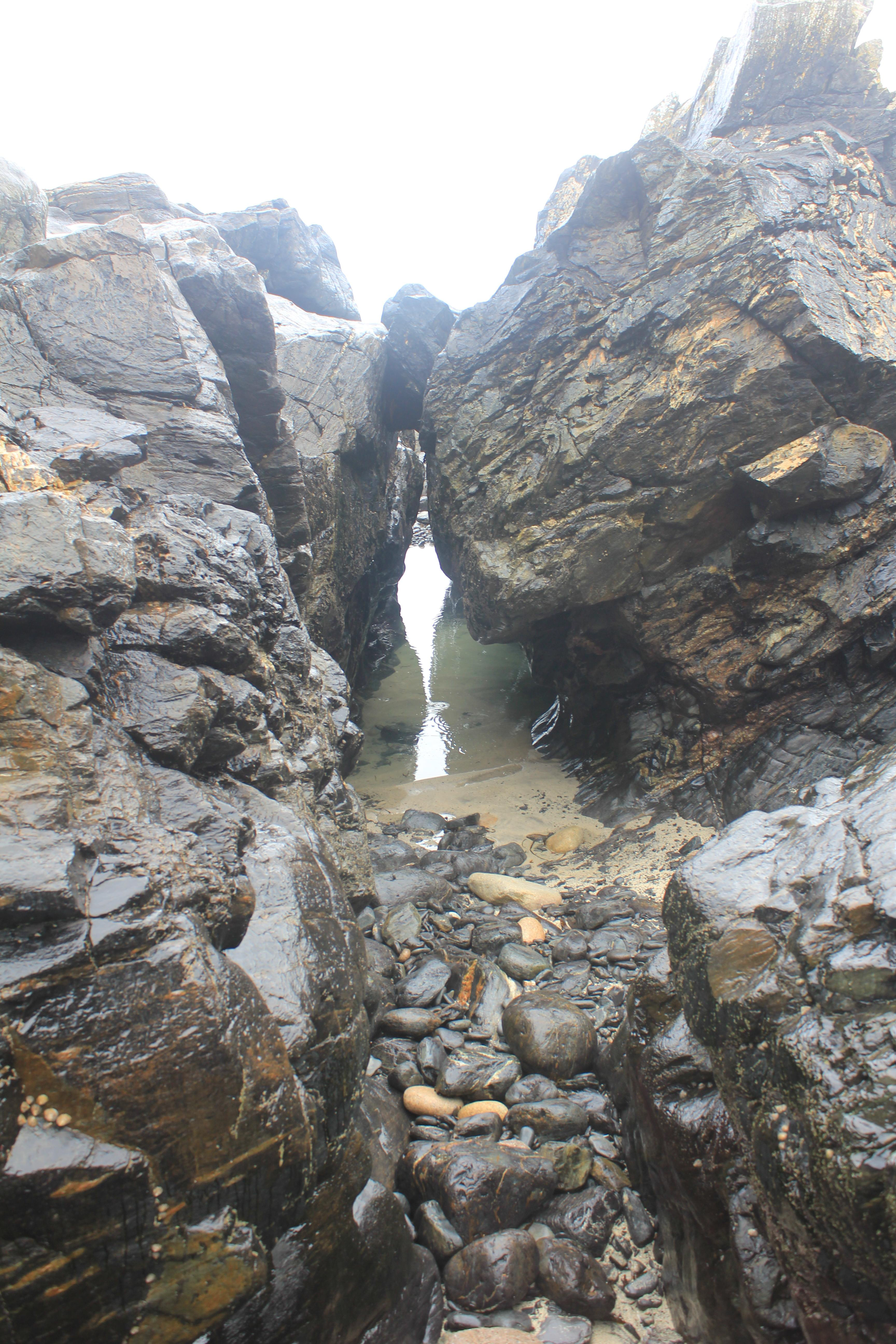
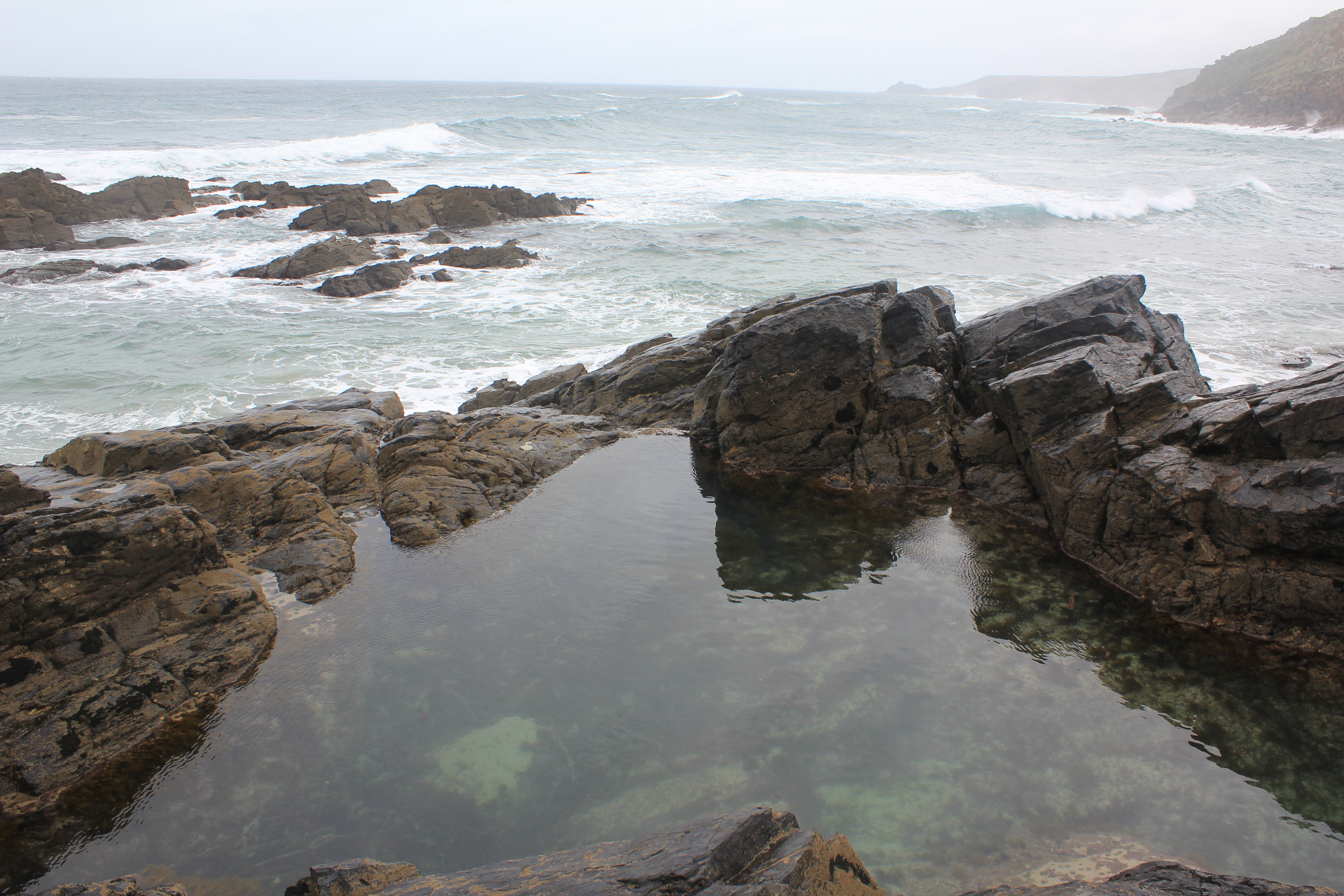
Geevor Tin mine visit - 29/09/19
To gain more knowledge of the mining process and the conditions the miners faced that shaped the coast I visited Geevor Tin Mine.
Whilst on the underground mine tour in the Wheal Mexico mine which took you through some of the victorian workings, the guide explained that the lodes of copper and tin would normally be found sandwiched between layers of Quartz. They were formed almost 300 million years ago when gases from the molten rock below escaped and solidified through features in the rock above. These created the lodes so precious to the county.
In the Hard Rock Museum I found the below picture of some of the miners kids at a pool built by the miners, this got me thinking whether the pool at Boat cove was created in the same way?
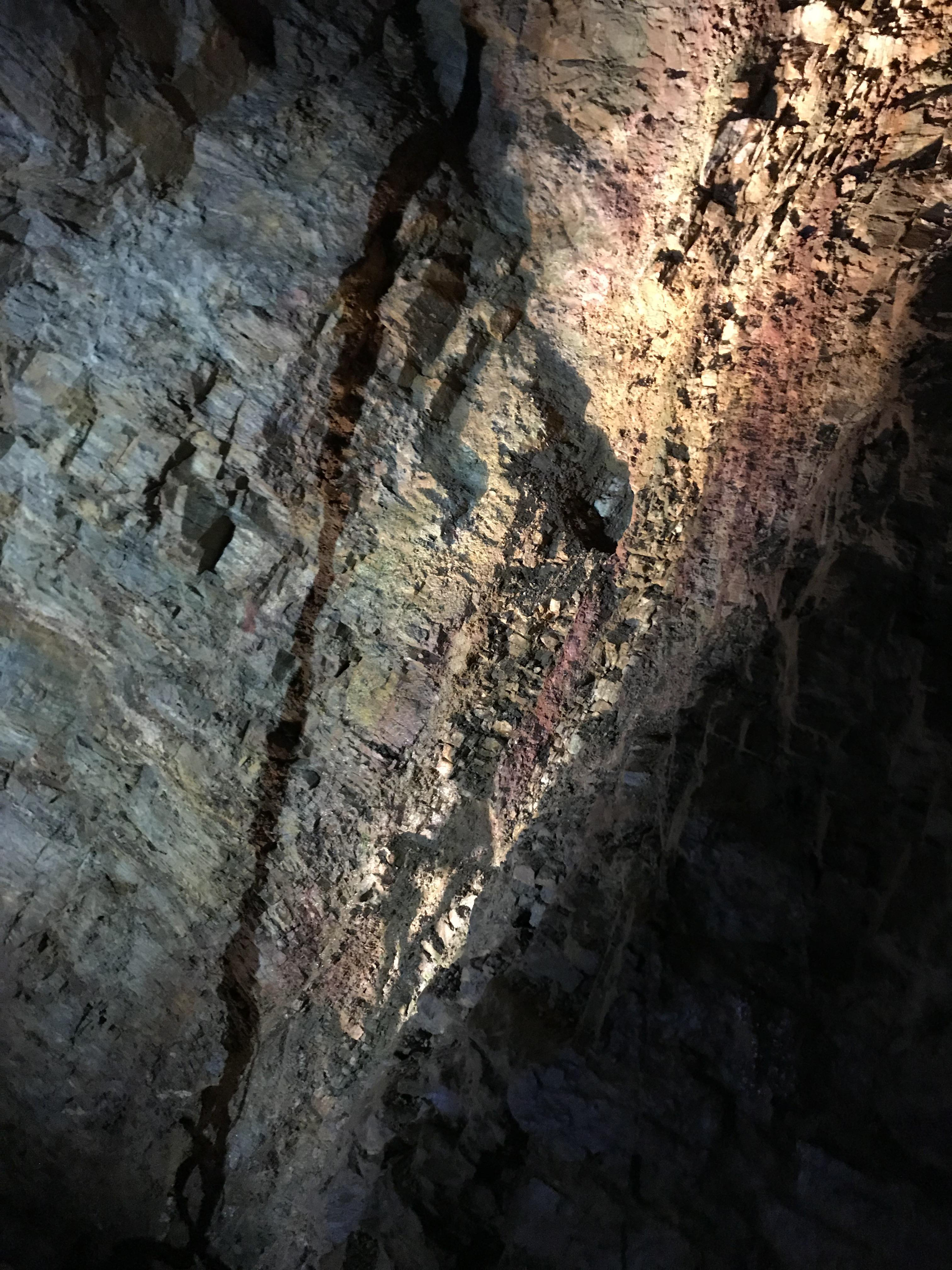


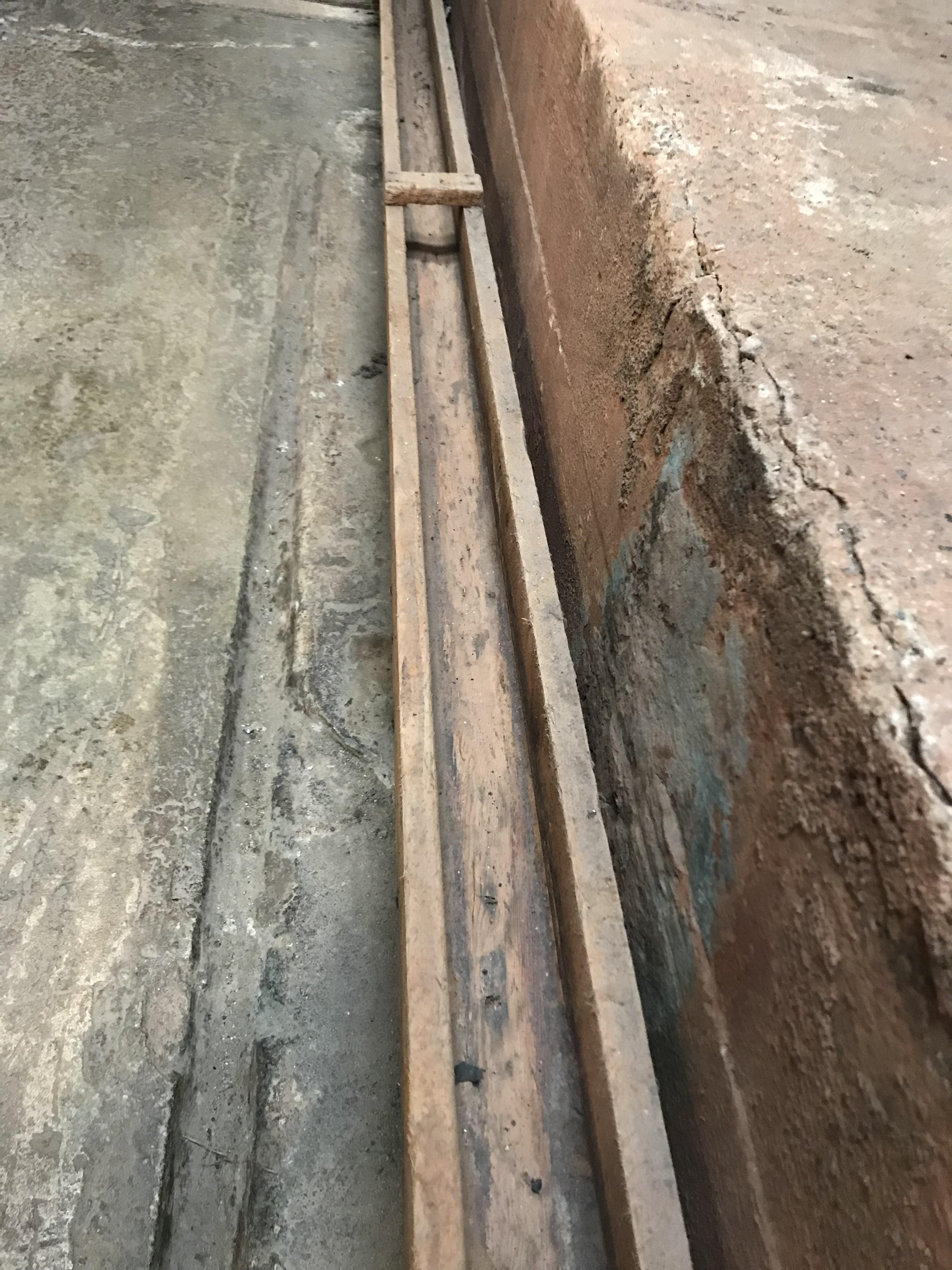
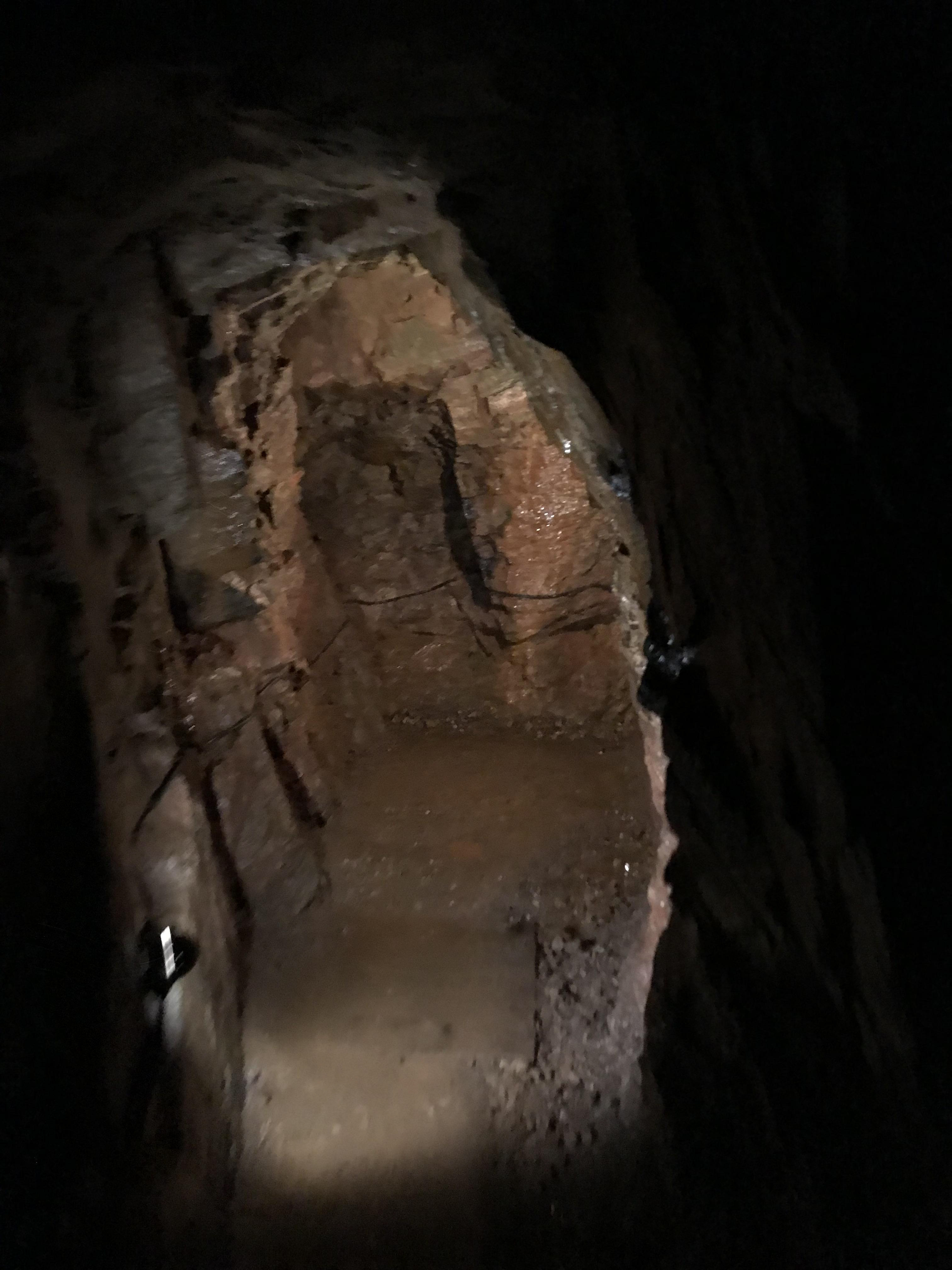
Research into Miner's pool's 29/09/19
As soon as I returned from Geevor I researched further into Miner's pools. There was very little information but I did find the article below by Greg Martin.
In the article he states that the pool at Boat cove was created from one of the local miners call Jack Freestone and that as well as the pool at the bottom of Geevor there was another at the bottom of Kenidjack Valley which is named 'Pullandase'.
So it confirmed that the natural pool I thought I had found was in fact made for recreation and cleansing by the miners. This gave a deeper meaning to the site but also brought it in line with the rest of the human effected Tin Coast.
The way it has re-naturalised itself is impressive and shows the power the earth has to heal itself and for life to prosper.
The pool at Boat cove, photo courtesy of Greg Martin
Device sketches - mind maps - 30/09/19
To experience the site from another perspective we had to design a device using one of the senses, I wanted to show the the beauty and the colours of the pool an these are my initial mind maps.
Kresen Kernow visit - 02/10/19
I decided to further my research by visiting the recently completed Cornish archive at Kresen Kernow, in the hunt for more information on the miner's pool's and the mines themselves.
The building itself is extremely impressive, a very controlled blend of new and old. A cascading stair falls from the upper floor where you can search the records of all things Cornish.
There was very little information on miners' pools, which in my eyes makes them more mystical and meaningful with the knowledge of them and their stories passed down from generation to generation, within a community that holds them in such importance.
I did however find a map from 1934 showing the Avarack pool thats just below Geevor Tin mine, making it at least 85 years old. Other maps of the St.just area. show just how many mines were functioning in 1837.
Whilst looking through leases to the ownership of minerals under the sea I also found out about the Cornish foreshore case which lead to Cornwall Submarine Mines Act 1858 which was drawn up to define the ownership between high and low water which fell to the Duchy not the Crown.
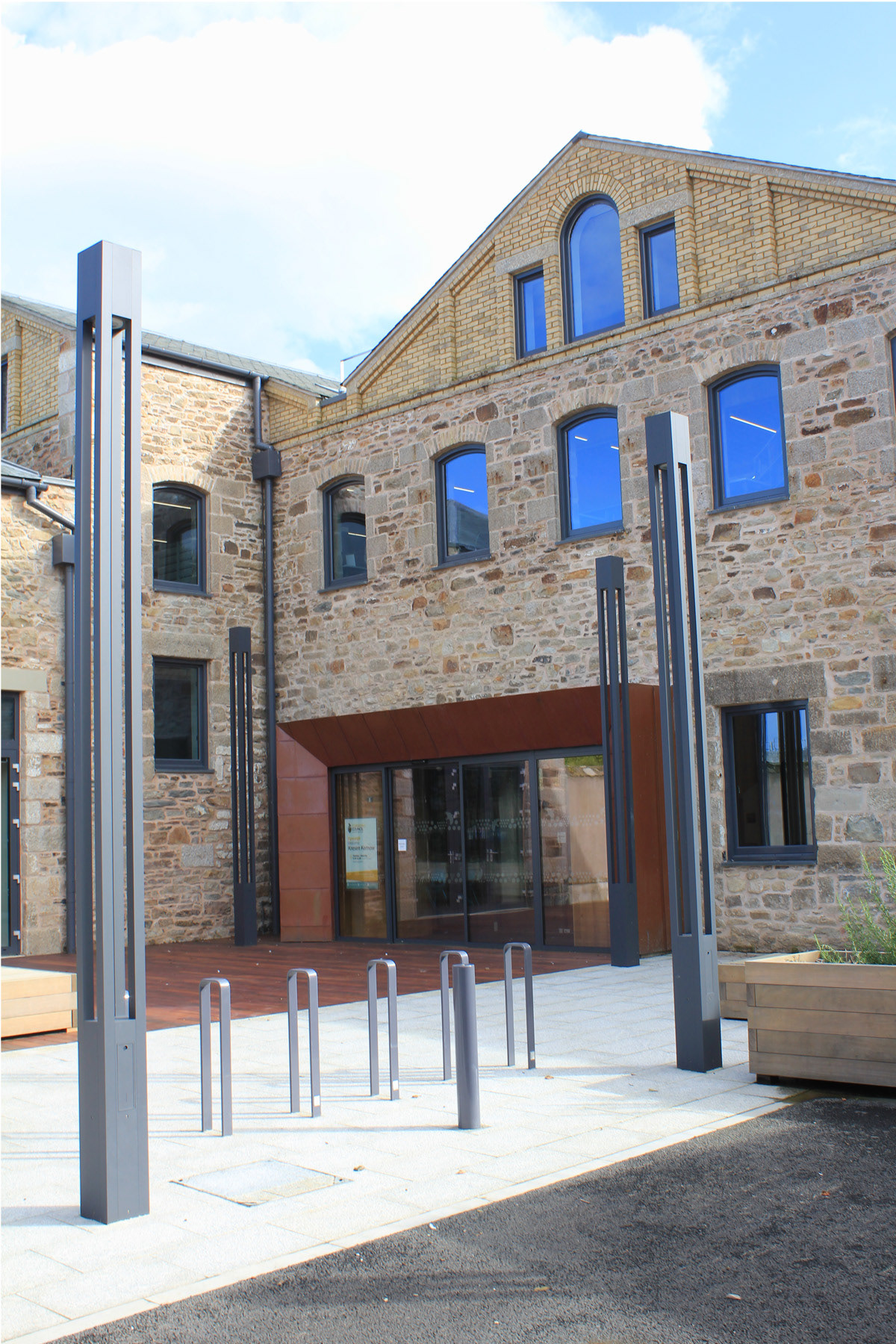

Pendeen Consols mine 1872
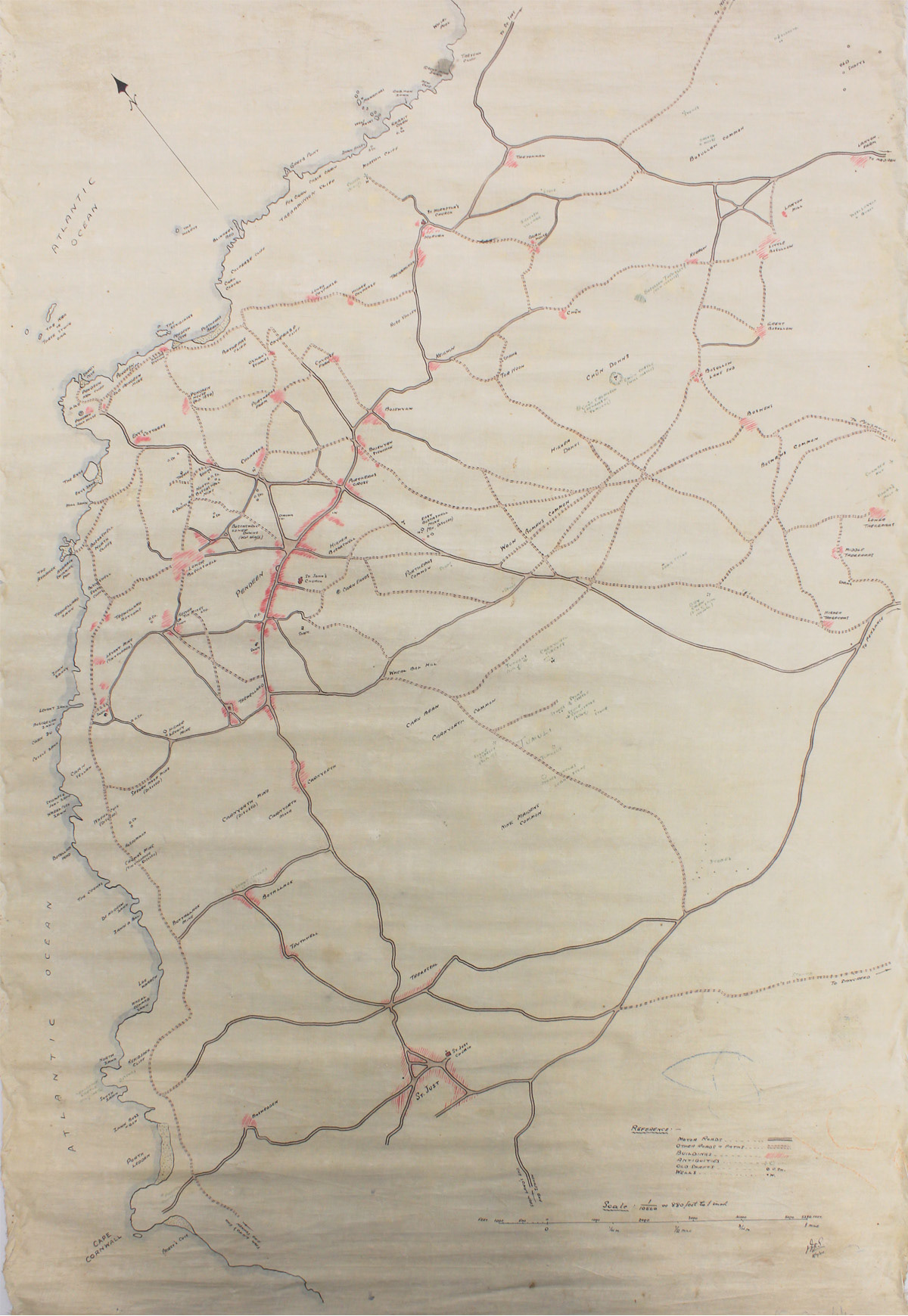
St.Just map 1934 Showing the Avarack sea pool
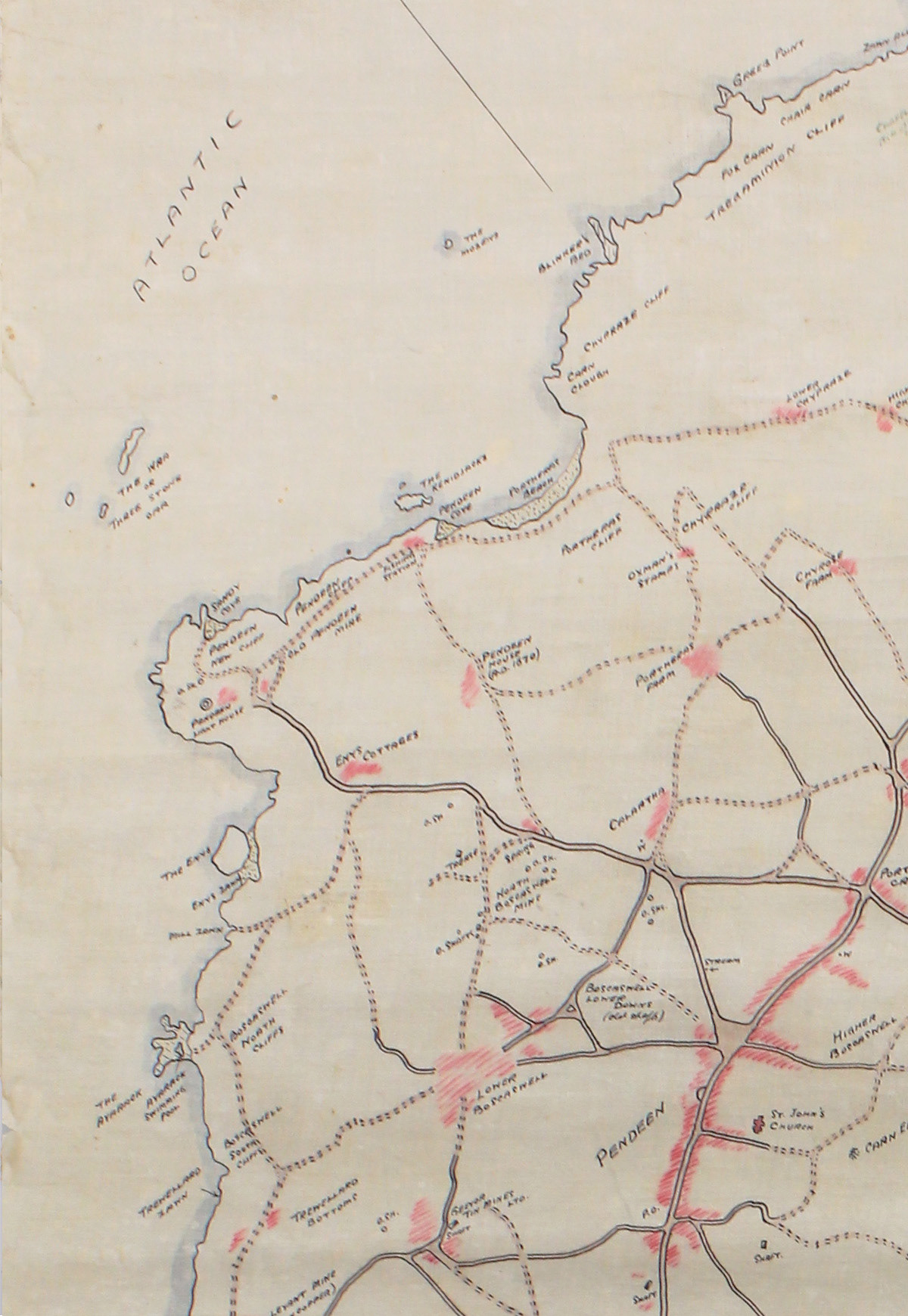
Avarack 1934

Beautiful Title

Mine name and land overview

Pendeen Consols section
Exploration of my site from different views and perspectives. I swam, dived and paddled in the sea and the pool to capture the colours and the transitions of light of the place.
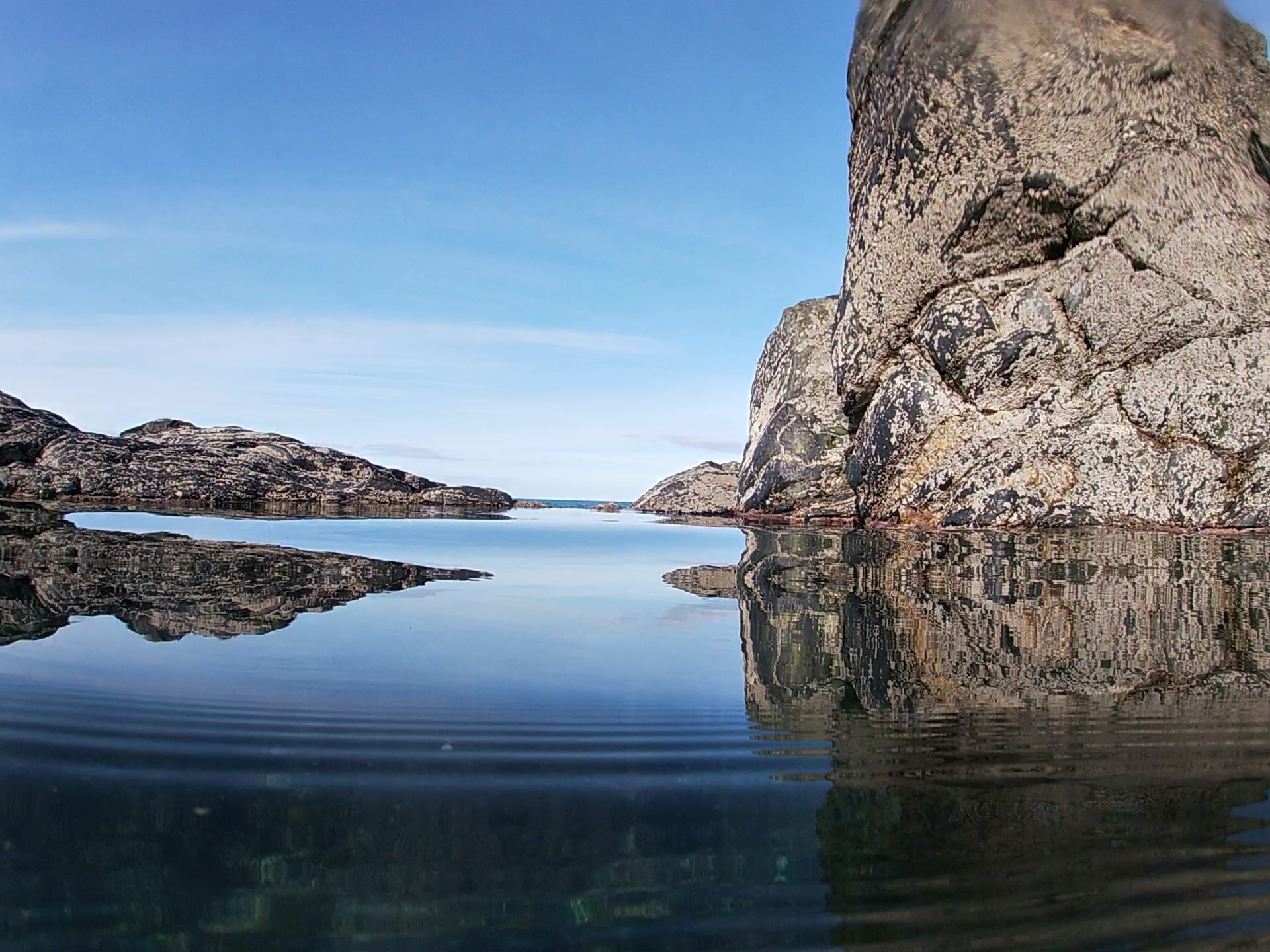

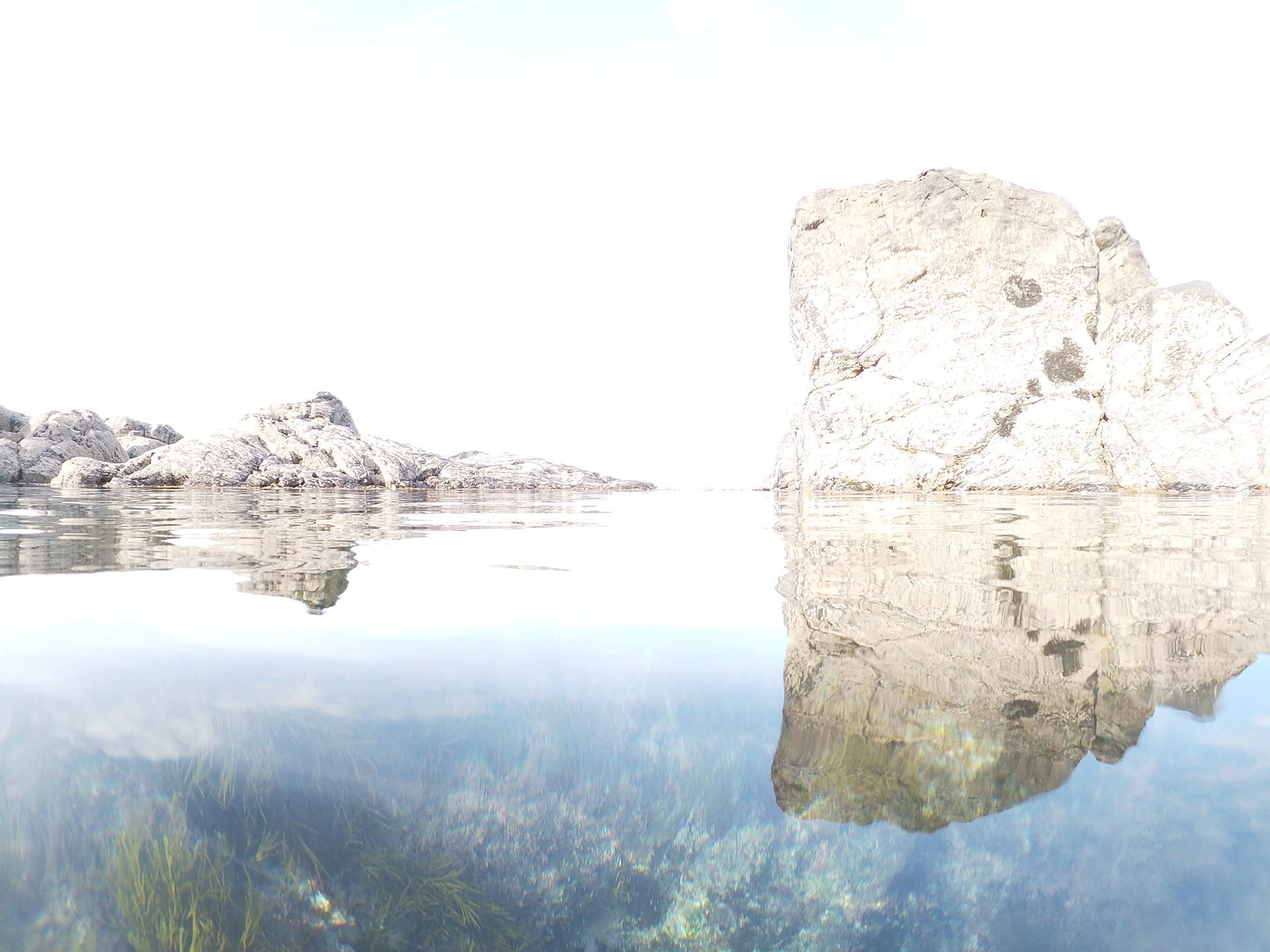
Site visit 02/10/19 - 03/10/19
I revisited the pool to explore and experience it in different conditions. I wanted to take as much in from it as possible, to really get to know the place and what I would have been like for the community, in particularly the miners to immerse themselves in this place after being underground all day.
A sunset and sunrise time-lapse video I took over the evening of the 02/10/19 and the morning of the 03/10/19 to highlight and feel the changing conditions and colours of the site.
Device sketches & Precedents - 5/10/19
After researching the mining industry of the Tin Coast it became clear that 18th and 19th century was the boom period for the industry. With the invention of the steam engine, Cornwall and it's miners were at the forefront of technology and driving the industrial revolution.
This boom period and its engineering in the victorian age made me think of the contraptions from H.G Wells' Time machine and the Jules Verne book 20,000 leagues under the sea.
A modern version of these devices by Carl Kleiner and Attributverket made them into functional art, something aesthetically beautiful but with function
http://www.carlkleiner.com/commission/fjarrvarme/
I planned to utilise these precedents while designing my device, which would be designed around making the unseen seen and celebrating the colours and beauty of the pool.


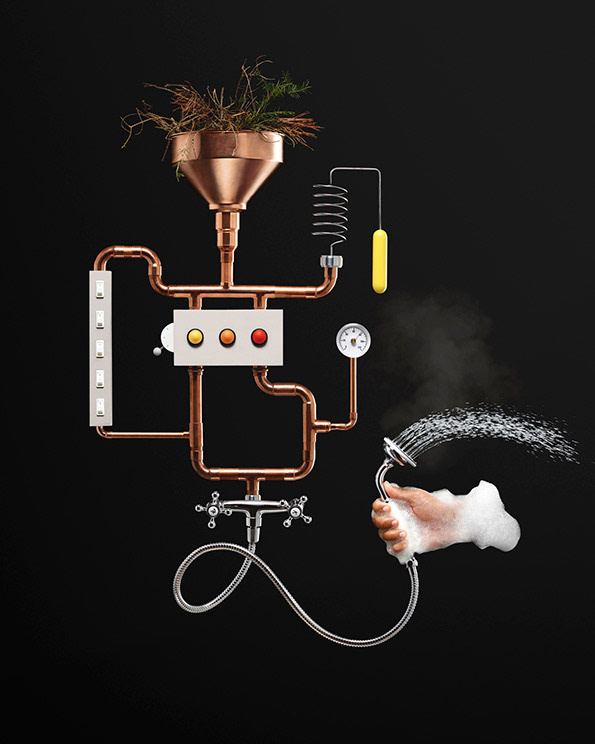
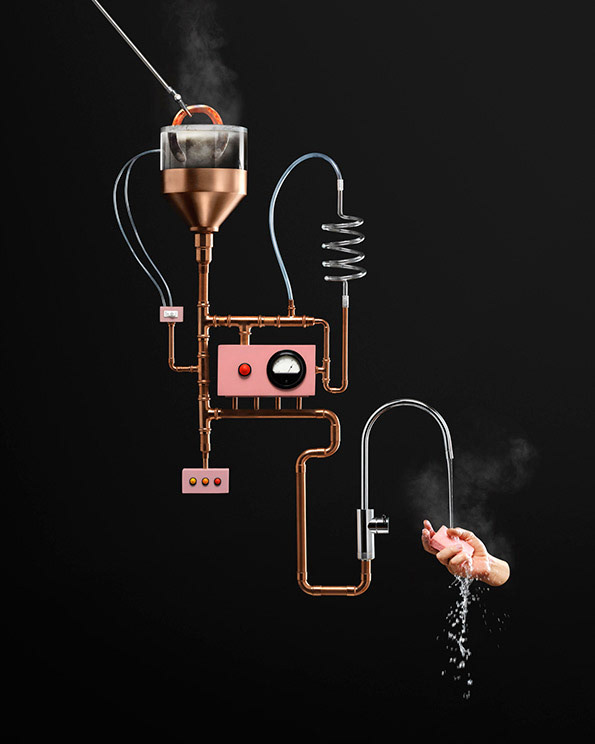
Device making - 8/10/19
A quick time-lapse of me producing the base for my device using Victorian larch roof purling's that I had previously stripped from a roof in St.ives, planed and refinished.
Device testing/deployment - 10/10/19
Today I got to test the device at Boat Cove with mixed results, partly due to the conditions and partly down to the device! The chromatography worked well on a couple of the samples producing some fantastic colours from the seaweed but once transferred to try and draw with the pigments/mixtures they were too watery. The machine didn't catch the wind as expected mainly down to the position of the wind mill that was supposed to drive the paper roll, even when the drawing were looking good storing the finished work was a problem with nowhere to dry them
So I took stock to come back another day learning from the lessons.
Device re-testing & deployment - 13/10/19
After adaption of the device I headed to the site again to try and get some better results, this time siting the contraption at the top of the hill at Boat Cove allowing me to transfer the pictures straight to the van to dry. I adapted the wind mill to changing it to the gramophone end whilst including a smaller inlet pipe to reduce wind buffering in the trumpet. The results were massively improved, with the machine producing some pictures that resembled the seaweed they were taken from, as you can see from the video's ...
Site Revisit - 19/10/19
In preparation for the interim review I ventured back to the site to get some further samples ready to dry and mount as part of my display. I also wanted to further pulled back photo's of the site to show the journey down and the view from further up the cliff.
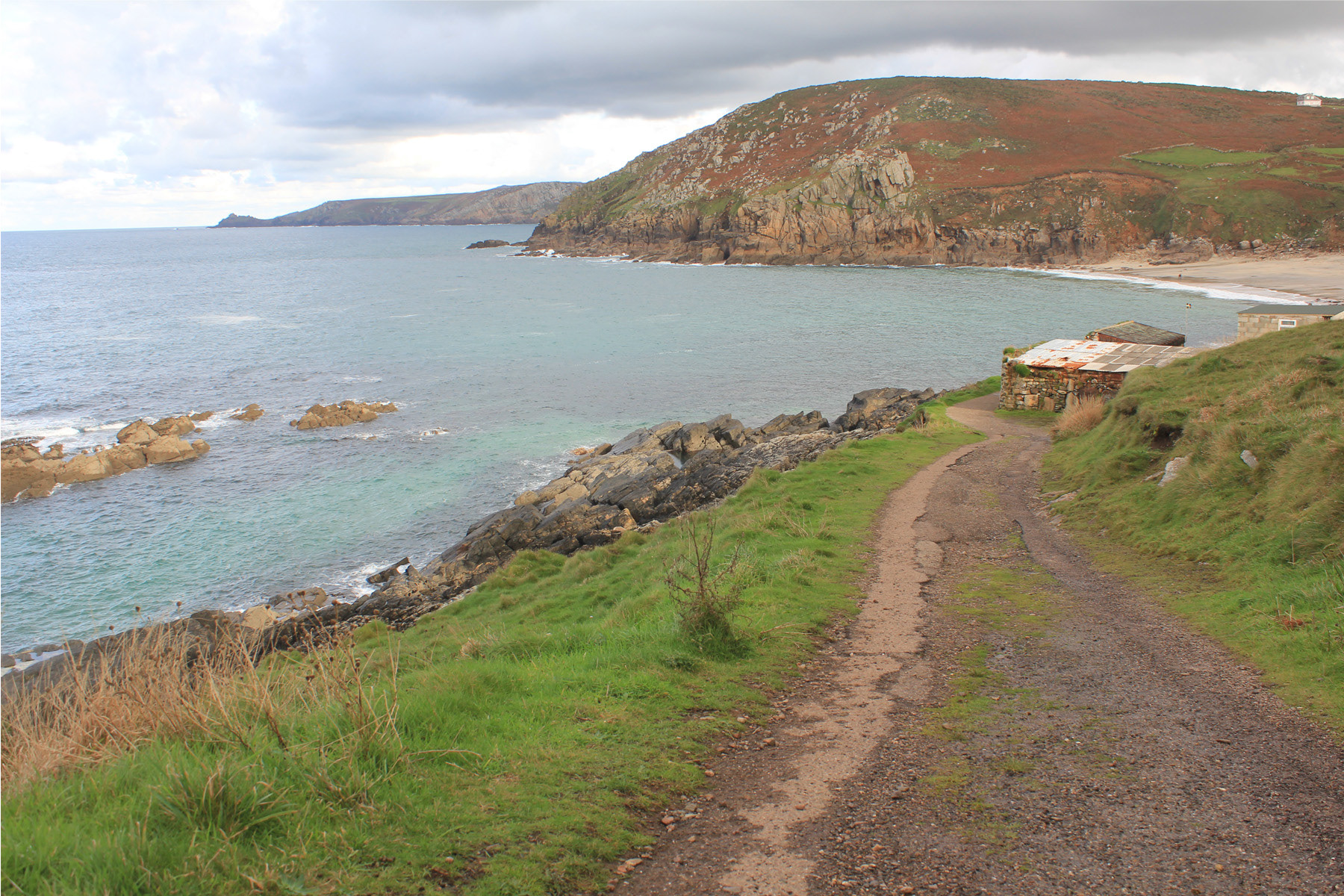
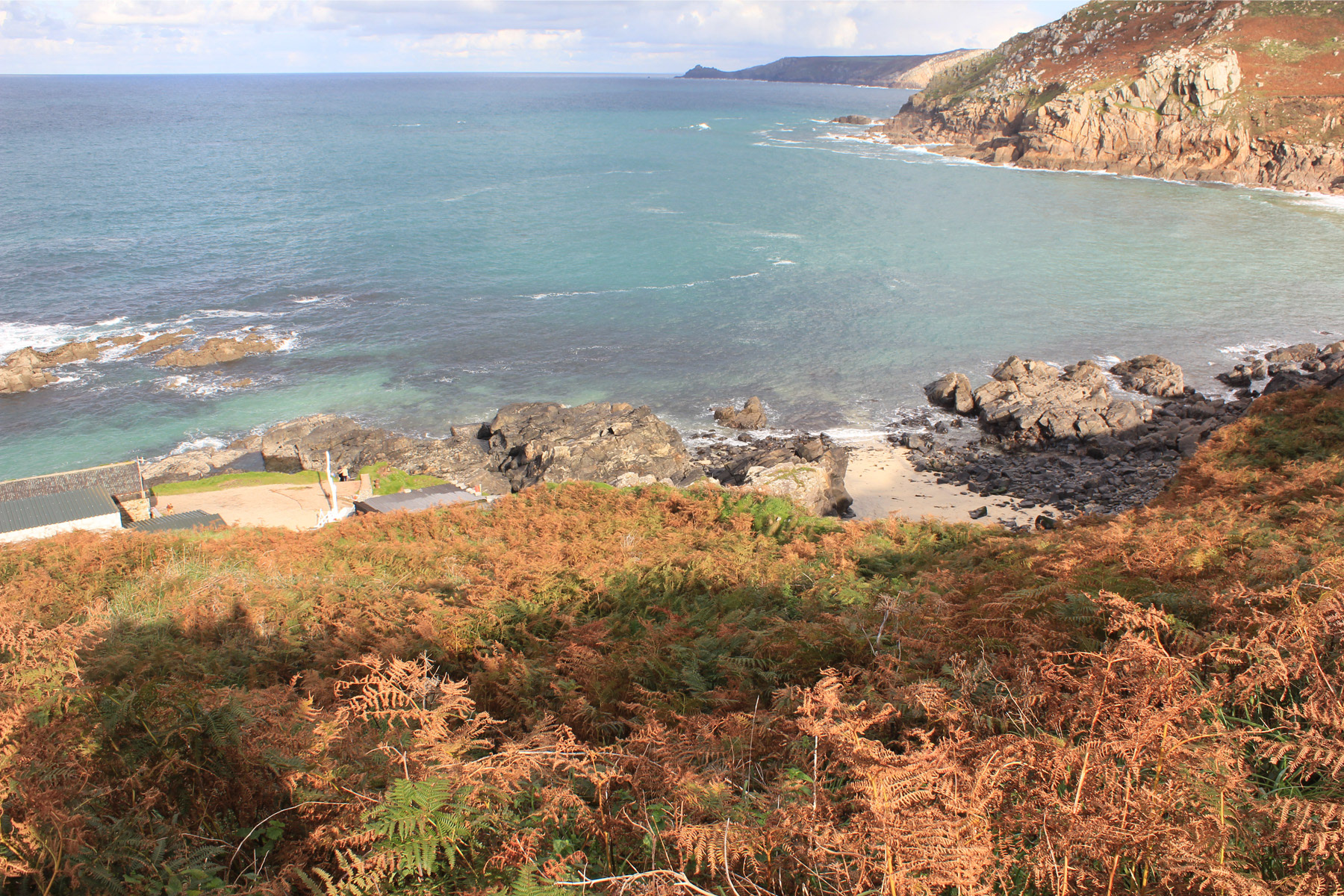
Interim review - 21/10/19
My presentation set up for the interim review including a video I put together as part of my digital presentation to explain the site and pool.
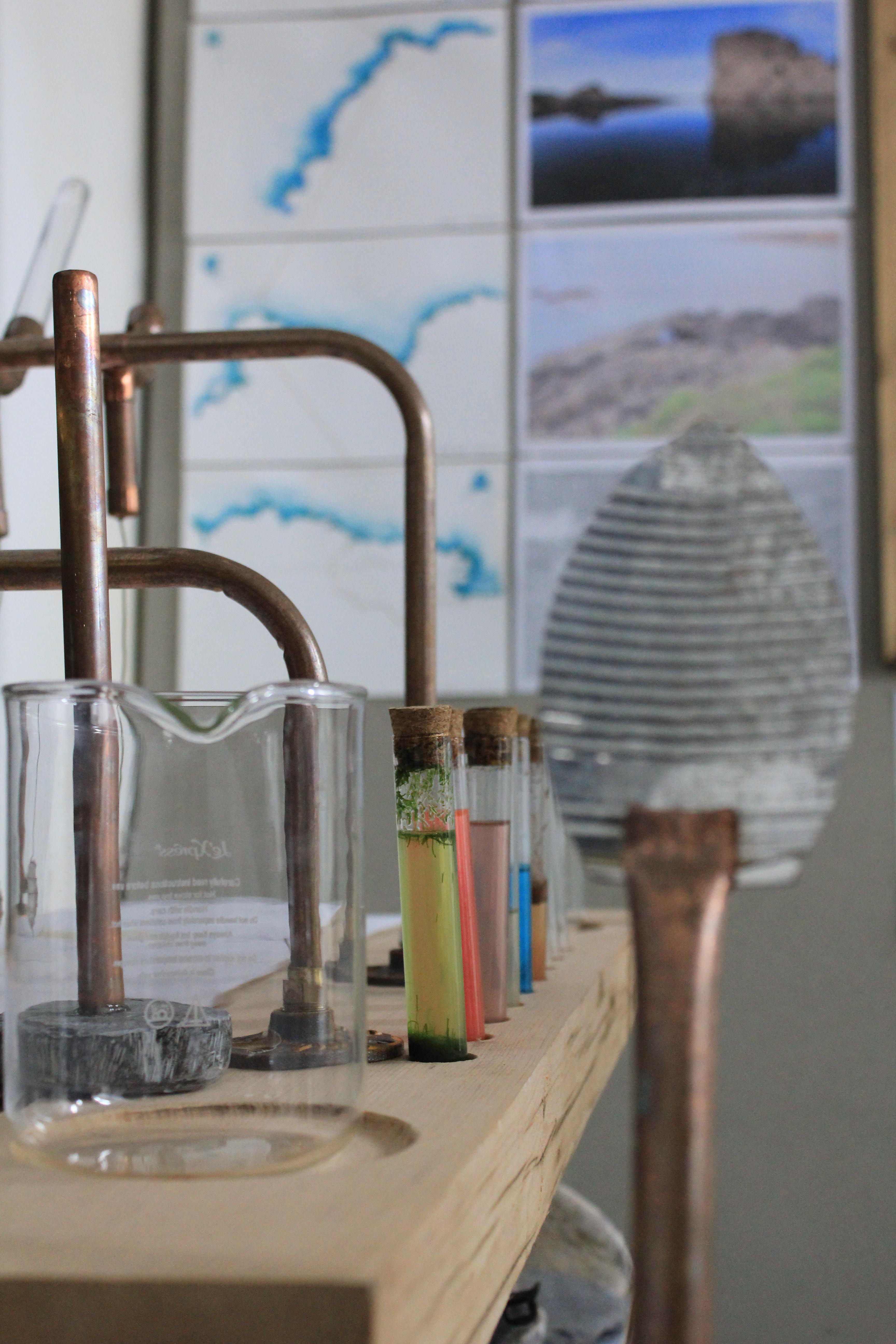
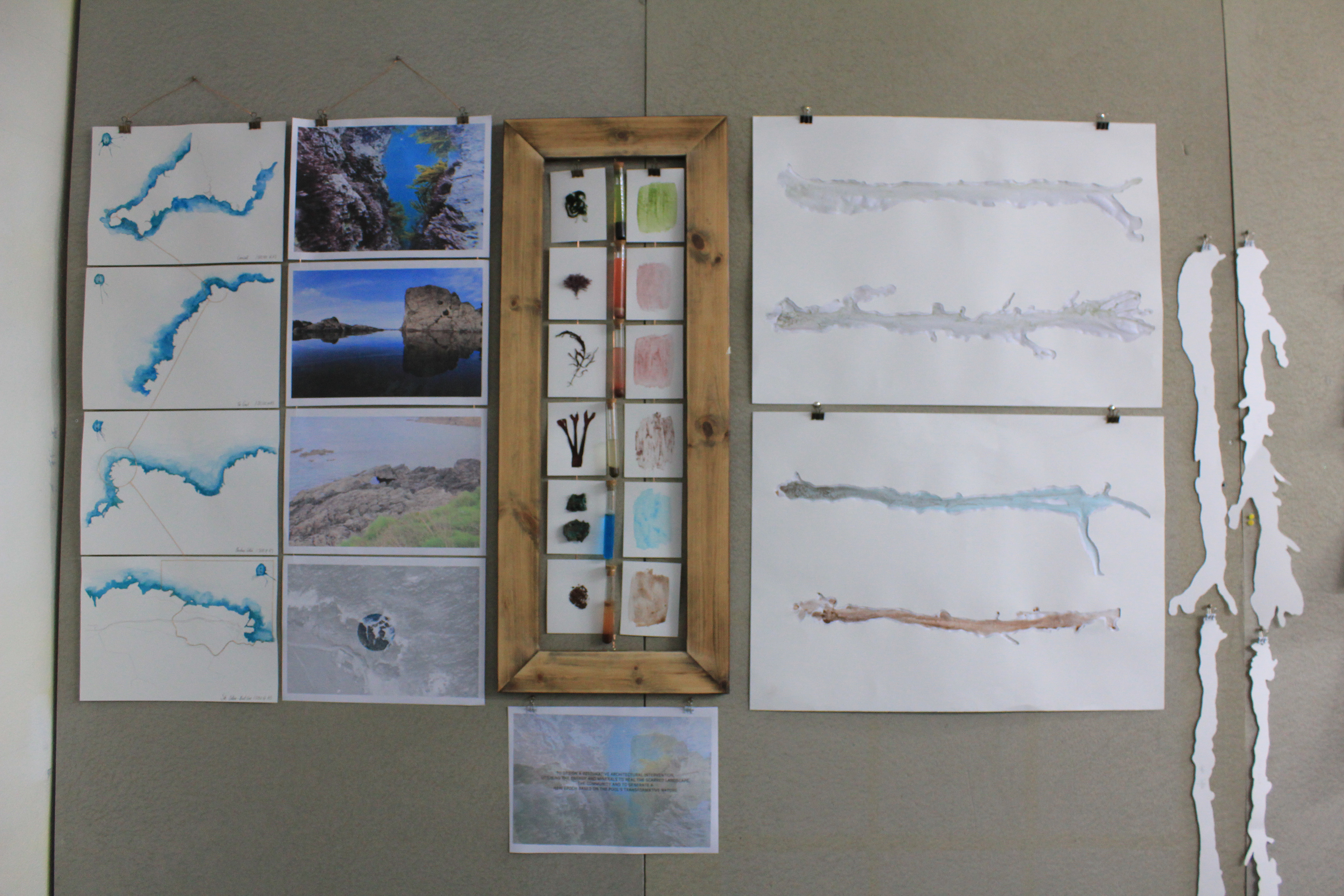

Further seaweed research - 22/10/19
After the review I was wondering where the colours/pigments from the seaweed were going to take me and thinking that they weren't going to drive my proposition but simply be a part of it.
While researching further I found the below article about utilising seaweed and clay to make adobe bricks. This changed my perspective on what I could use the seaweed for!
https://magazinemayaluxe.com/articles/making-houses-out-of-seaweed
Photo courtesy of Maya Lux magazine
I also found an in depth article in the National Geographic about seaweed carbon sequestration. This hugely undervalued natural element could produce world changing results. Capturing carbon 35 times faster than a rainforest, stabilising the oceans acidification, the ability to be used for biofuels, fertiliser, cattle feed, bioplastics and seaweed glass. The list is impressive but with Governments looking at it to capture carbon before it dies and falls to the seabed locking in the Co2 didn't seem like a long term solution.
What if we could harvest it with the carbon locked in and use it in a different way?
https://www.nationalgeographic.co.uk/environment-and-conservation/2019/08/seaweed-forests-can-help-fight-climate-change
Conversation with Sam Mansfield 29/10/19
With the seaweed process seemingly moving forward I managed to schedule a conversation with an underwater photographer and cameraman Sam, known to have done a fair amount of research into miner's pool's. His name was passed to me by one of the ladies that swim in the pool, he shared with me even more stories about the mysterious pools. One story of note was about other pools in the county and a notable one near marazion. John Stackhouse a famous victorian botanist and seaweed researcher had built one for his wife to bathe in as he believed the seaweed had healing powers, this brought me straight back to the seaweed and it's restorative effects again.
Stackhouse wrote; Nereis Britannica ; Containing All the Species of Fuci, Natives of the British Coasts: with a Description in English and Latin, and Plates Coloured from Nature.
Photo courtesy of https://www.linnean.org/news/2019/01/15/15th-january-2019-meet-the-team-events-and-communications
Seaweed harvesting and site visit 31/10/19
Calm seas and a spring tide gave me an opportunity to harvest a good variety of seaweeds

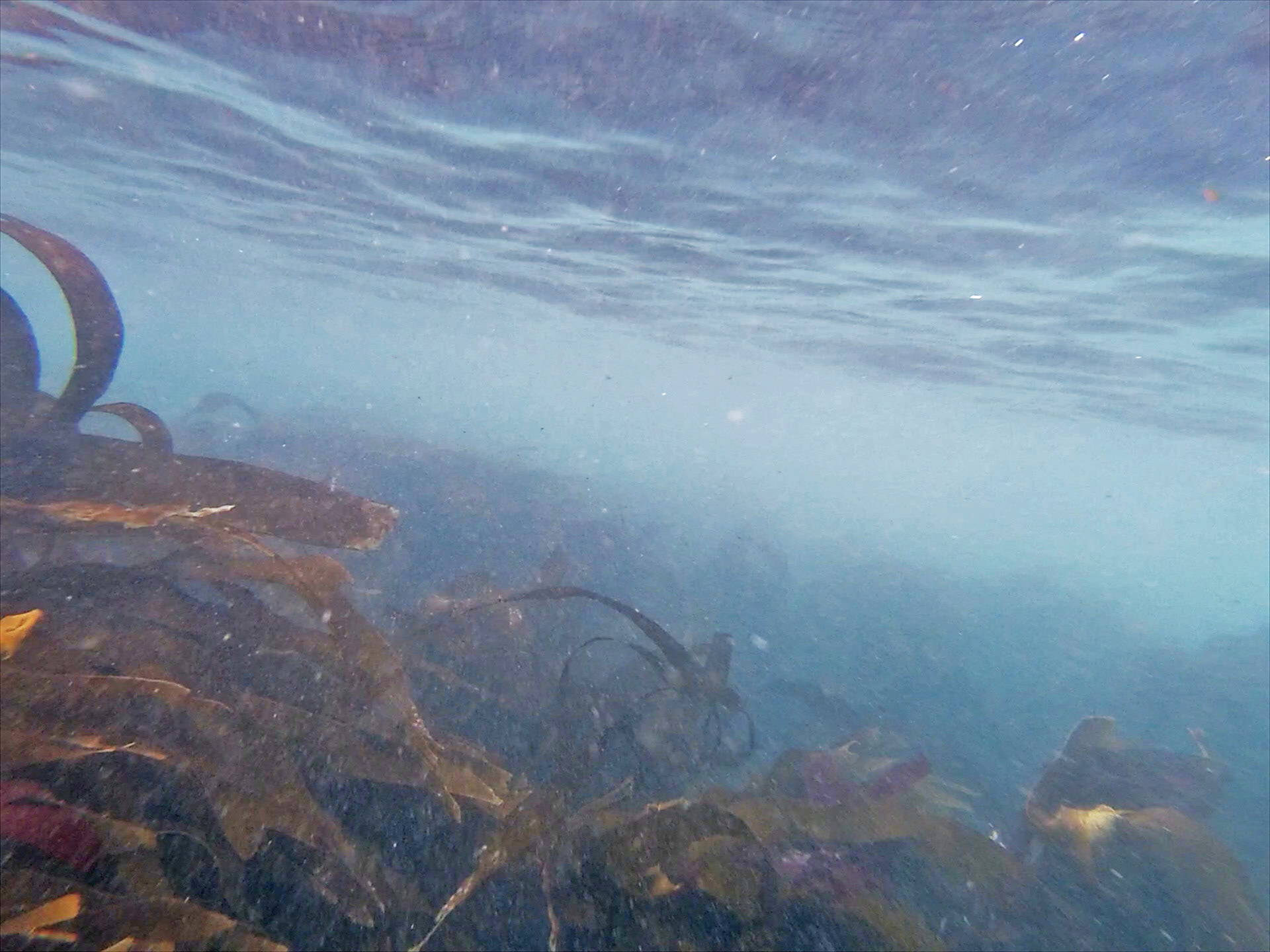
Seaweed bricks and salt blocks 4/11/19
In the ideal world I would have left the seaweed to air dry before processing it but as time is short I had to cook it to dry it out. It broke down into a dust fine once cooked ready to cast into a brick shape. The end result needs work as at the minute it has a cake like consistency! I will research further into adapting the process to yield stronger results. If the process is possible it would be an ideal way of locking the captured carbon in.
The salt blocks were an off shoot of trying to make the brick. I've been wanting to make the whole process as circular as possible and these worked well whilst utilising the pigments to colour the blocks. They could be used as Epsom salts for baths or if added with cornflour to give strength the could be used like Himilayan salt blocks in spa's to create glowing internal walls.

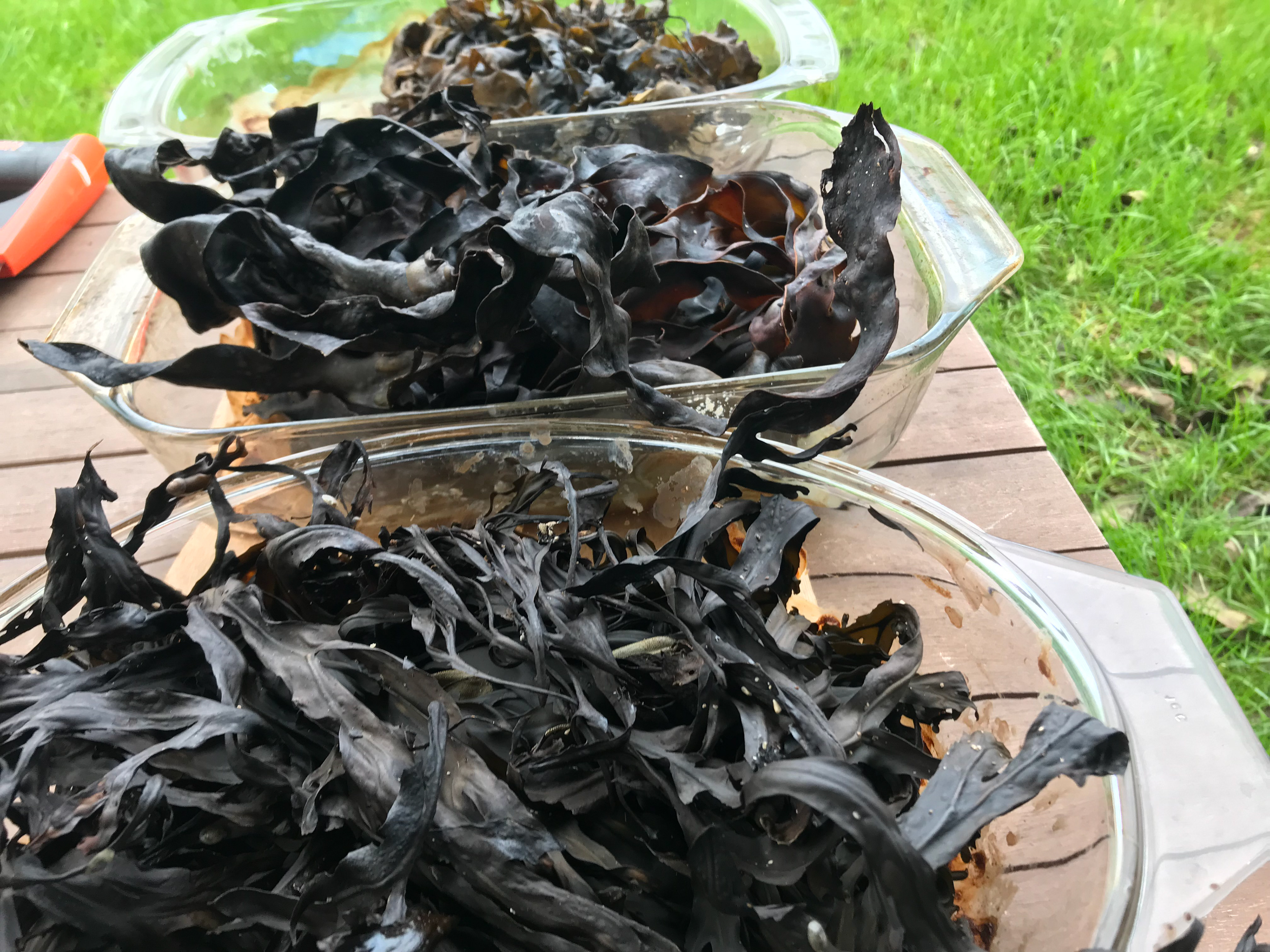

Seaweed farm - 5/11/2019
My investigation into the bricks has steered me towards designing a place that could manufacture the material. I started to design ways of farming the seaweed, harvesting it and producing the bricks at the site. It would be a way of facilitating a better way of working with nature but also provide a new industry for the area, while healing the environment and the landscape.
Site model - 6/11/19
For my exploratory site model I decided to represent the close ties the community have with the pools. They were a place of celebration, of joy and something that bound the people together.
In the summer at Avarack when the mines would close for 2 weeks some 600 people would descend on the pools from all over Penwith to swim, dive and enjoy themselves.
Interim Review 7/11/19
For the second review I presented my work in progress seaweed bricks along with my proposal to design and place a seaweed farm and factory at the site. With the seaweed sequestering co2 before being harvested and made into bricks. I also planned to include an archive at the site to house the stories of the pools.
With the seaweed prototypes I had made not being overly awe inspiring the proposal was not greatly received. The reviewers suggested further investigation of the bricks whilst suggesting that combining the stories and the factory could be a difficult task.
Since speaking with members of the community the issue of secrecy around publishing the stories and history of the pools had started to play on my mind. How could the story be told whilst keeping the mystery? Celebrated but not ruined, something I hadn't resolved in time for the review.
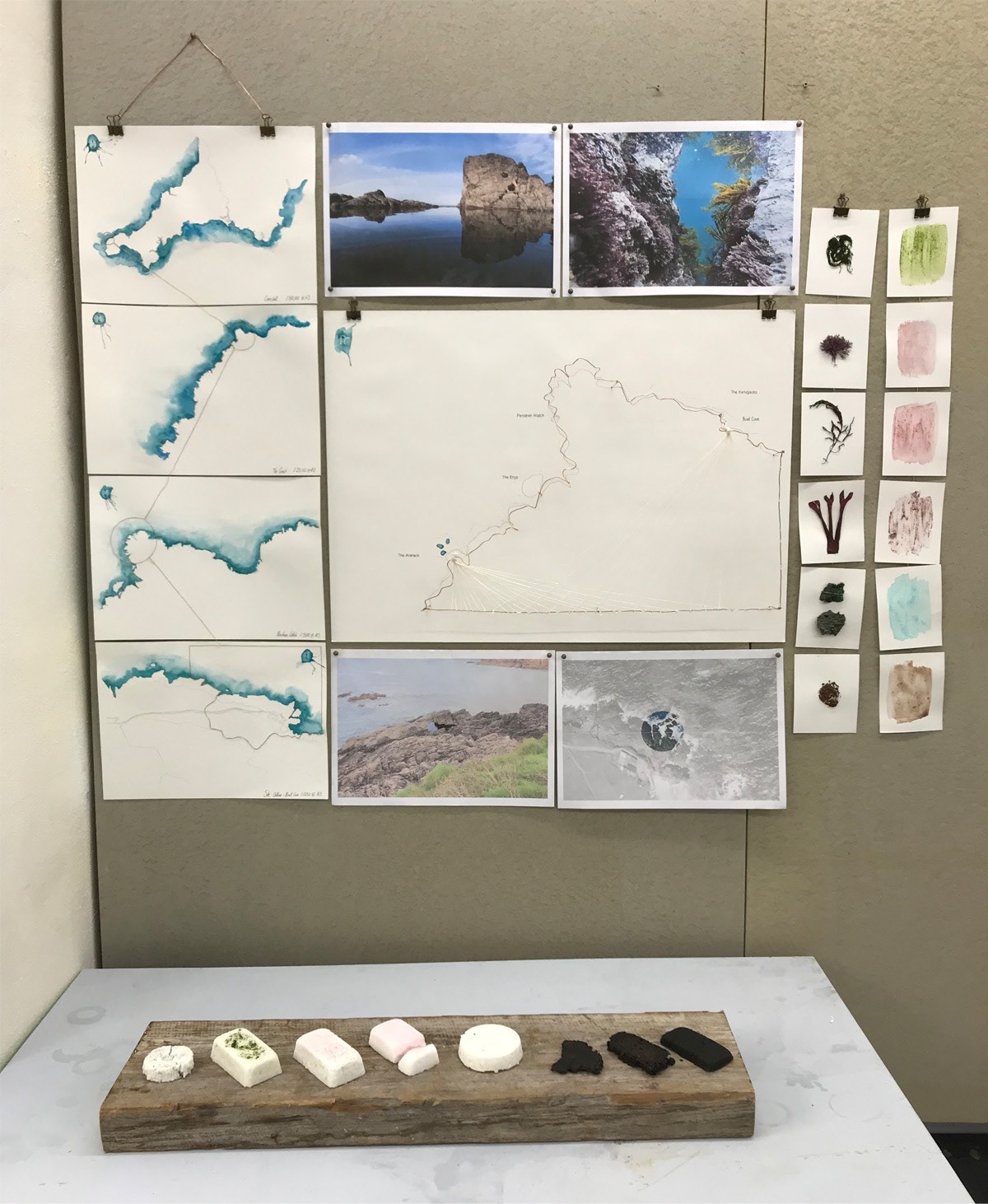
Further seaweed testing - 13/11/19
Following the review and taking on board the reviewer's advice I carried on my investigations into the seaweed bricks whilst adapting my approach and even tried to make some seaweed paper to use in the project. The change in approach from baking or air drying to boiling seemed to breed a little more success.
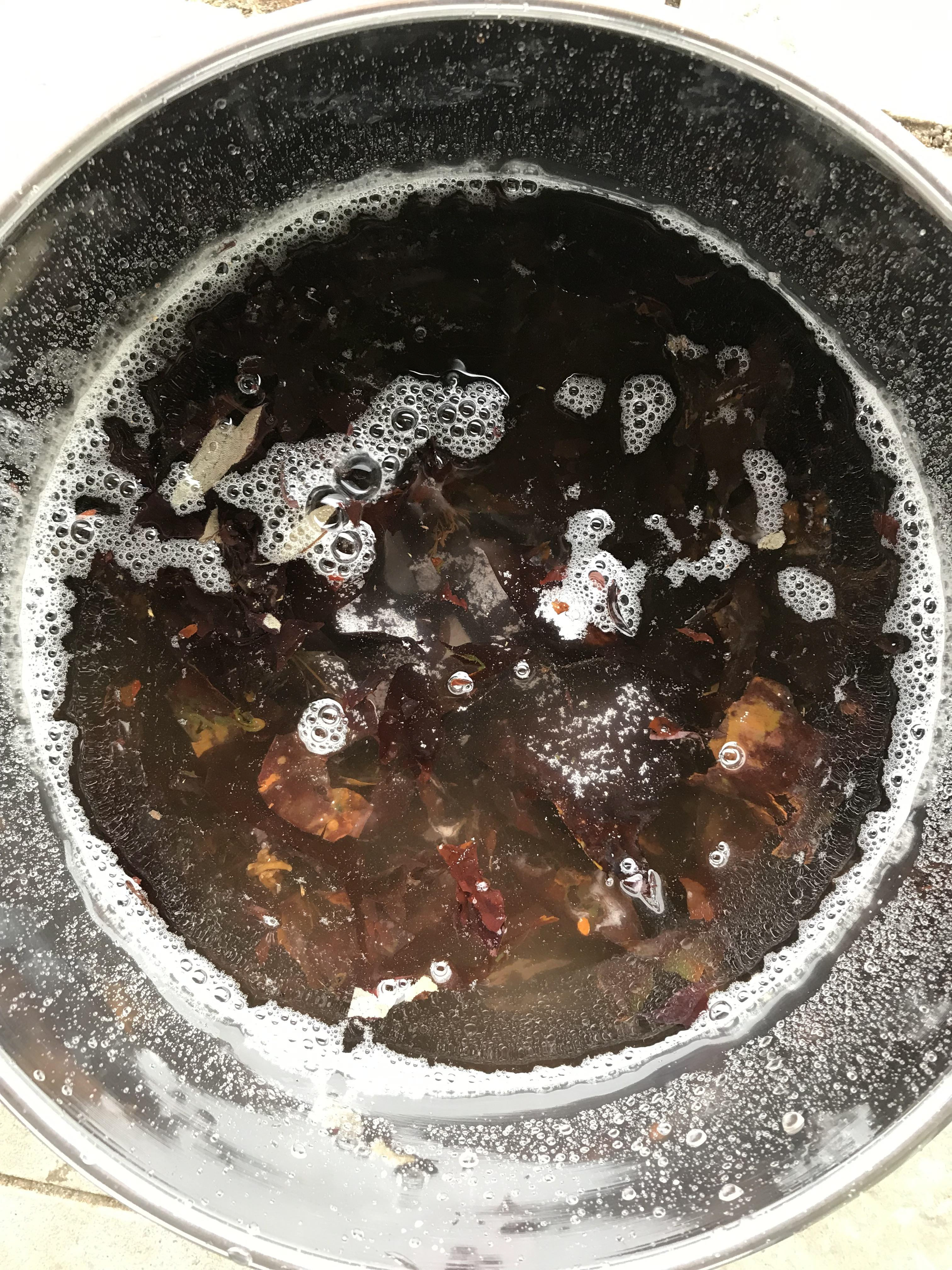
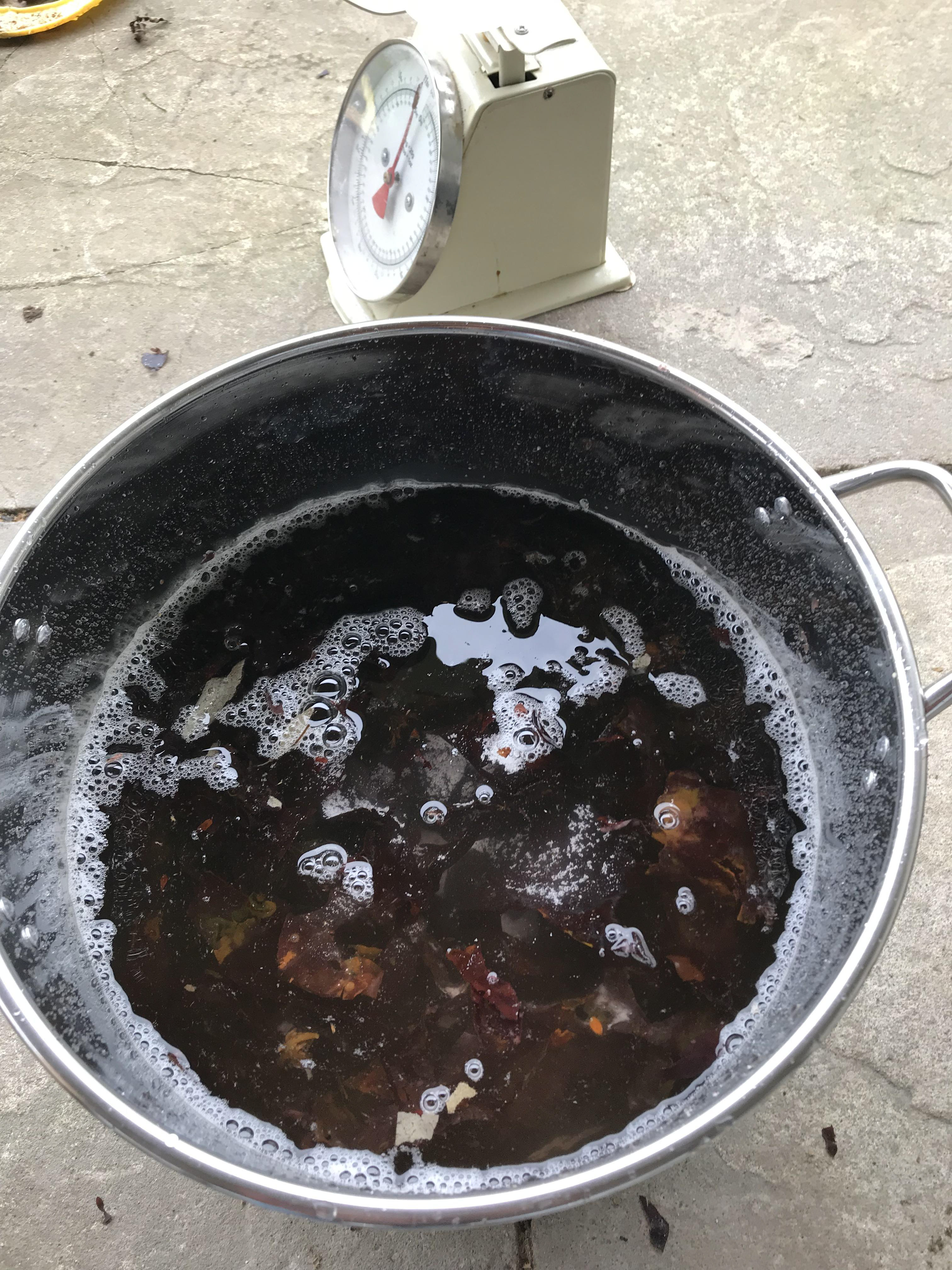
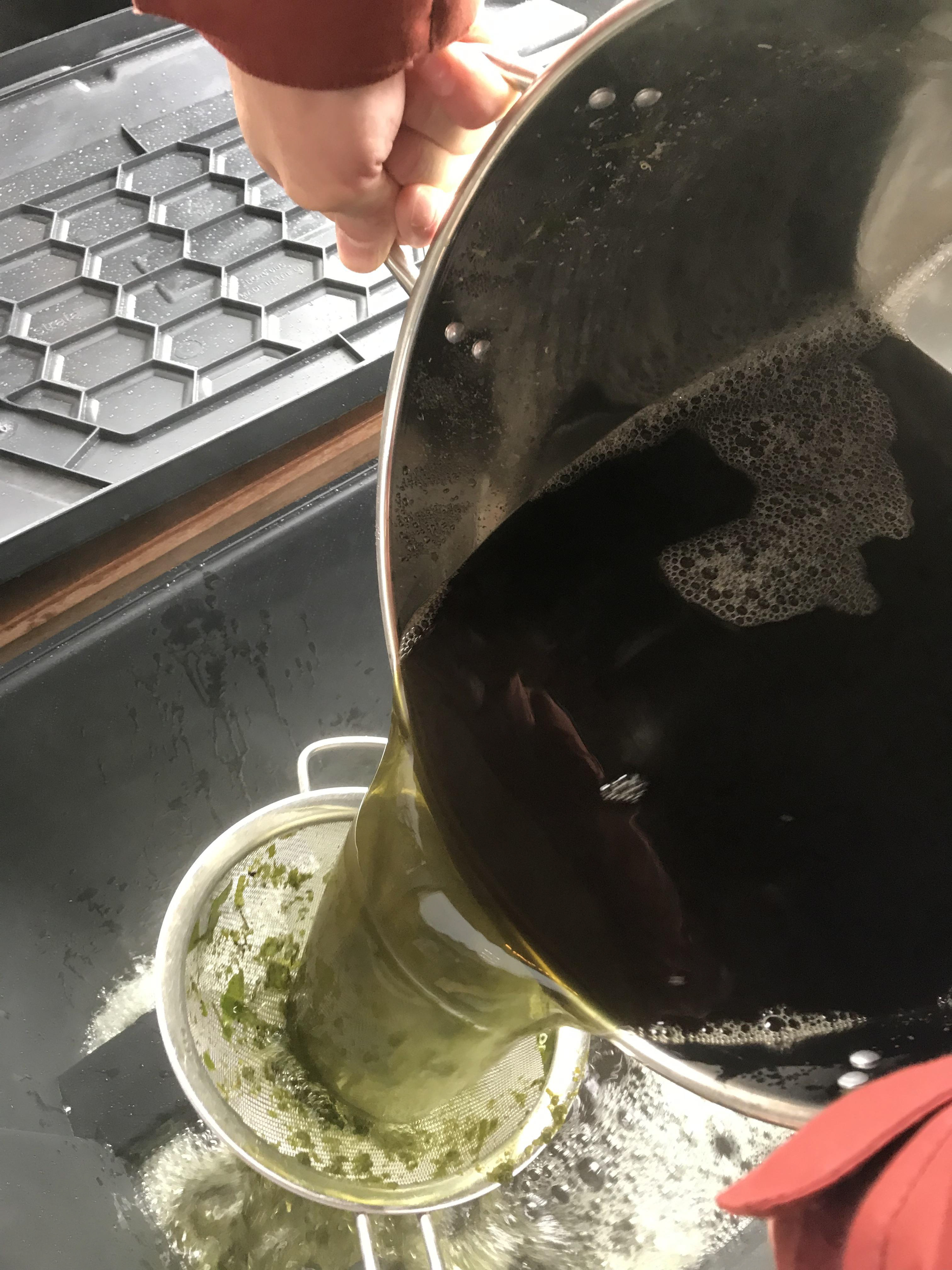
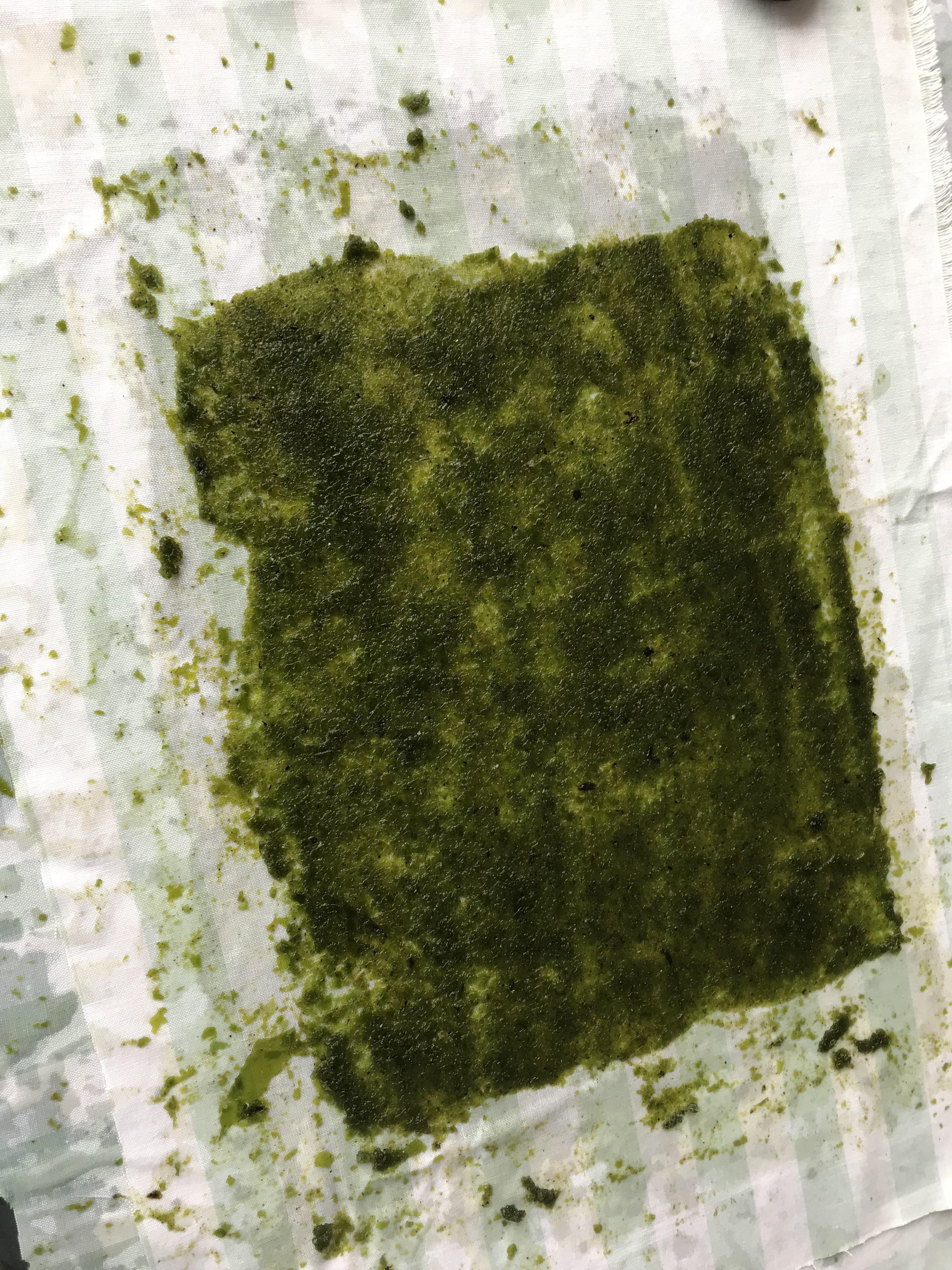

Site revisit 16/11/19
Following my second round of making I had run out of seaweed samples, so decide to take another trip to the site, this time with the family in tow! As you can see from the photo the smallest one was really stoked!
After some big storms the beach had been reshaped leaving hardly any sand, but also as there was a decent sized shore break my access to the red dulse I had harvested originally was limited. I could only reach some serrated wrack whilst getting taken out by the waves!
We also met another pool swimmer, bearing in mind I was in a 4/3 mm wetsuit she had a casual swim in the pool in her swimming costume! She stated after she swims in her special place for relaxation but also the health benefits related to cold water immersion!
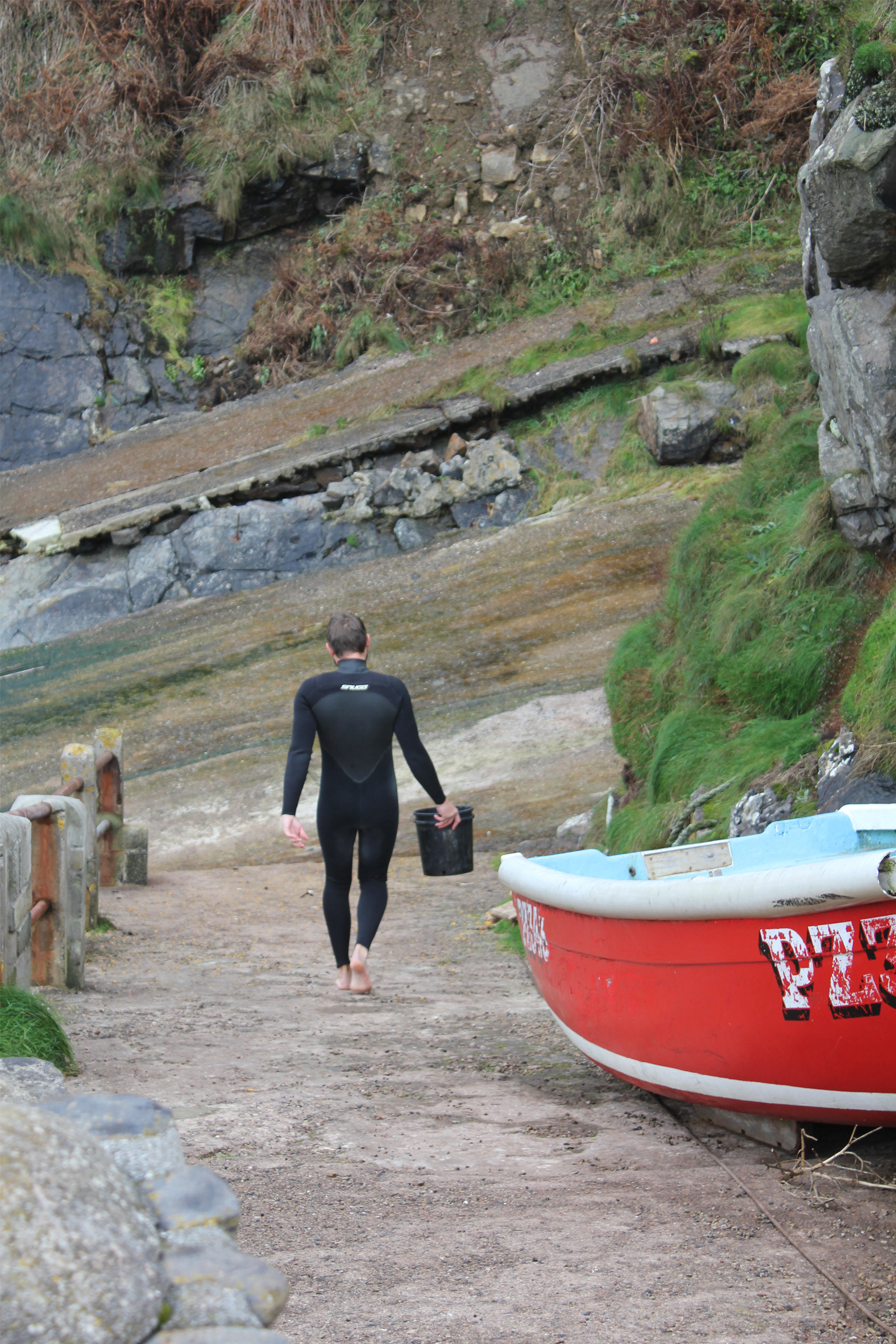
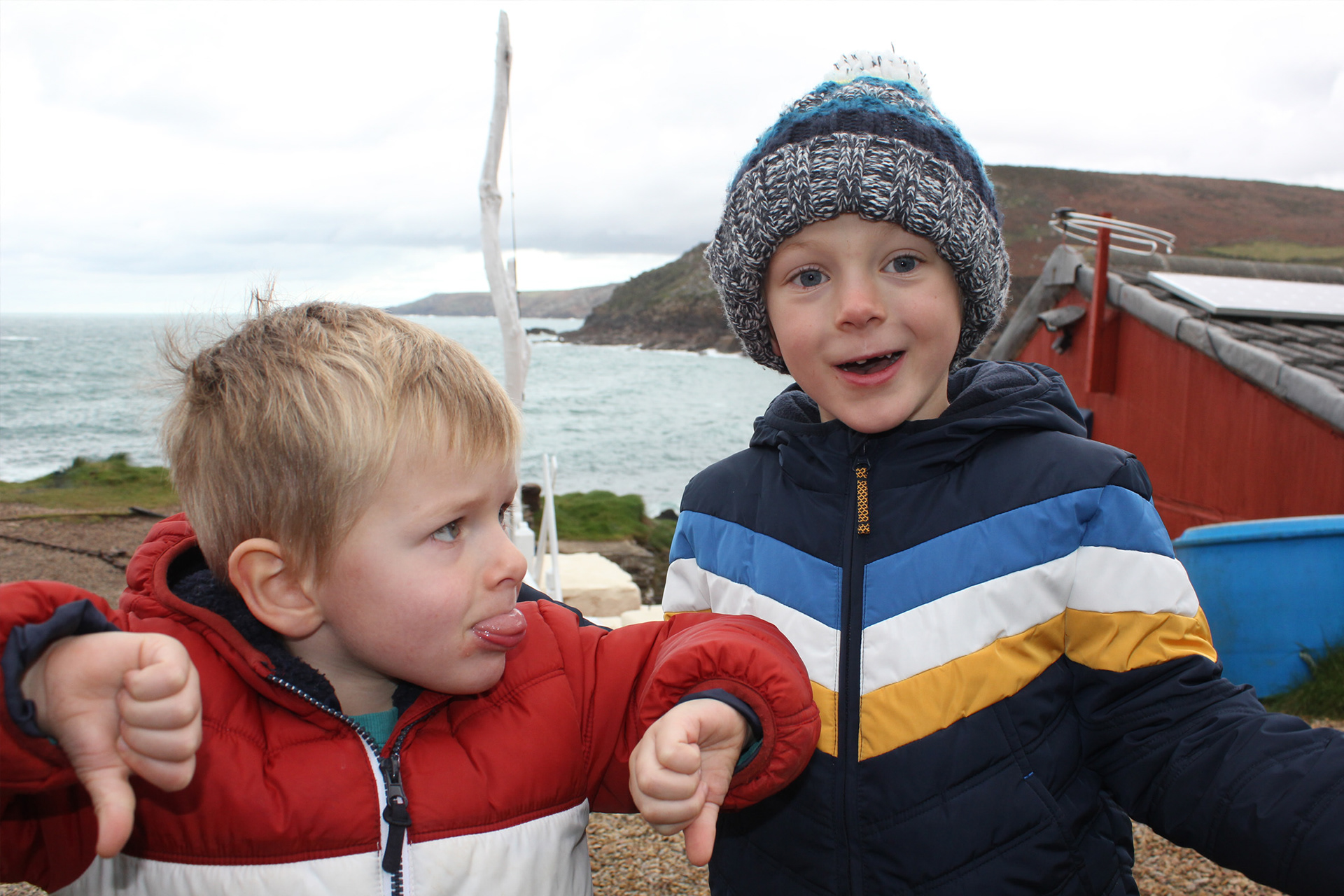
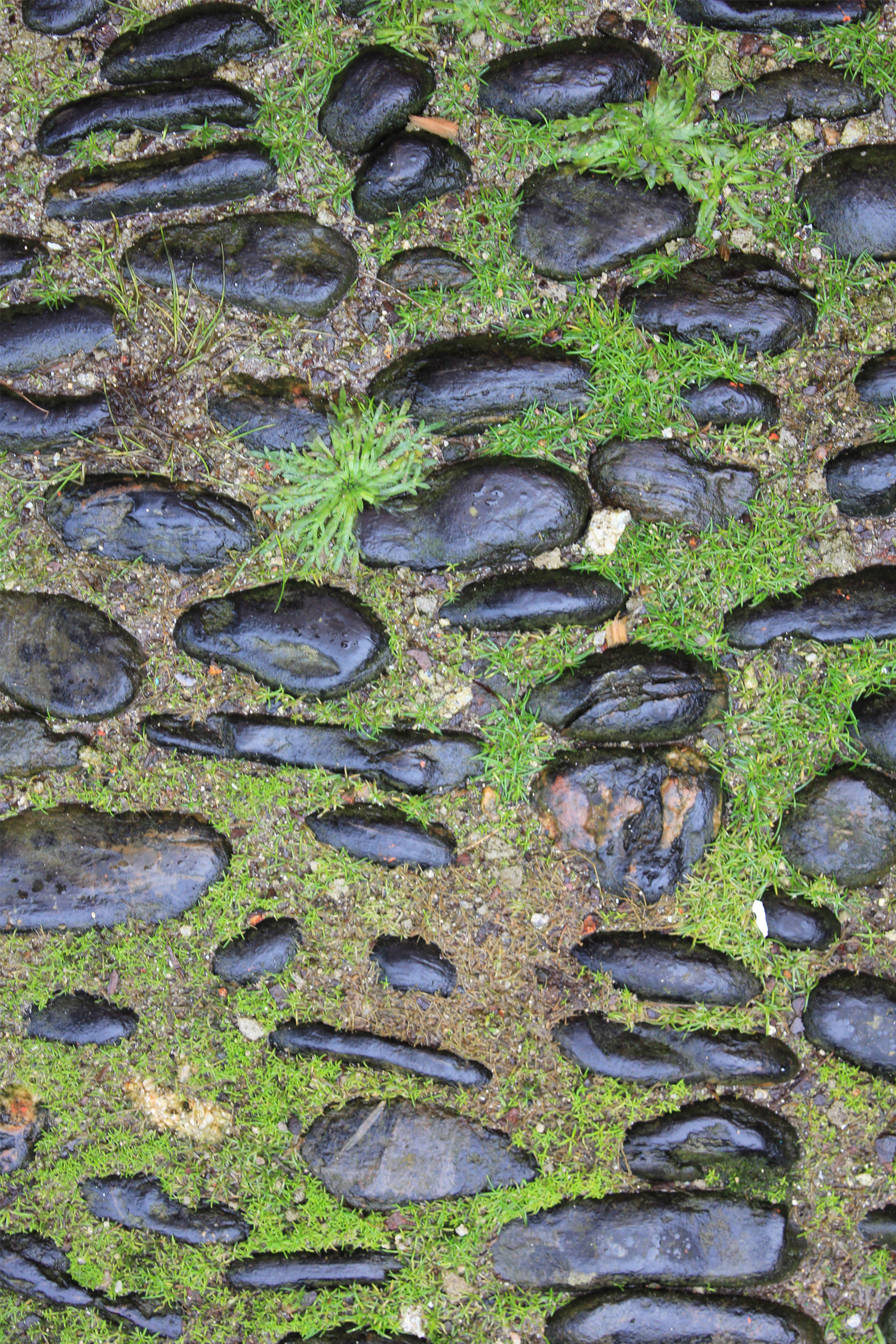
Compendium - 18/11/19
Following the trip at the weekend, speaking with another local and discussions with Tom, I have decided to focus solely on the Compendium of stories and put to one side the seaweed farm and factory. Something didn't sit well with me when I started to design a proposal for the site, placing it somewhere that is held so dear by the community just didn't feel right. The way the stories were recounted and hard to come by made me feel that they needed to be celebrated before they are lost. I felt they needed to be treated with delicacy, like I was designing a memorial. The reason the water photographer has never published his book was due to the pools importance to the community and not wanting to spoil the mystery and magic.
Precedents 18/11/19

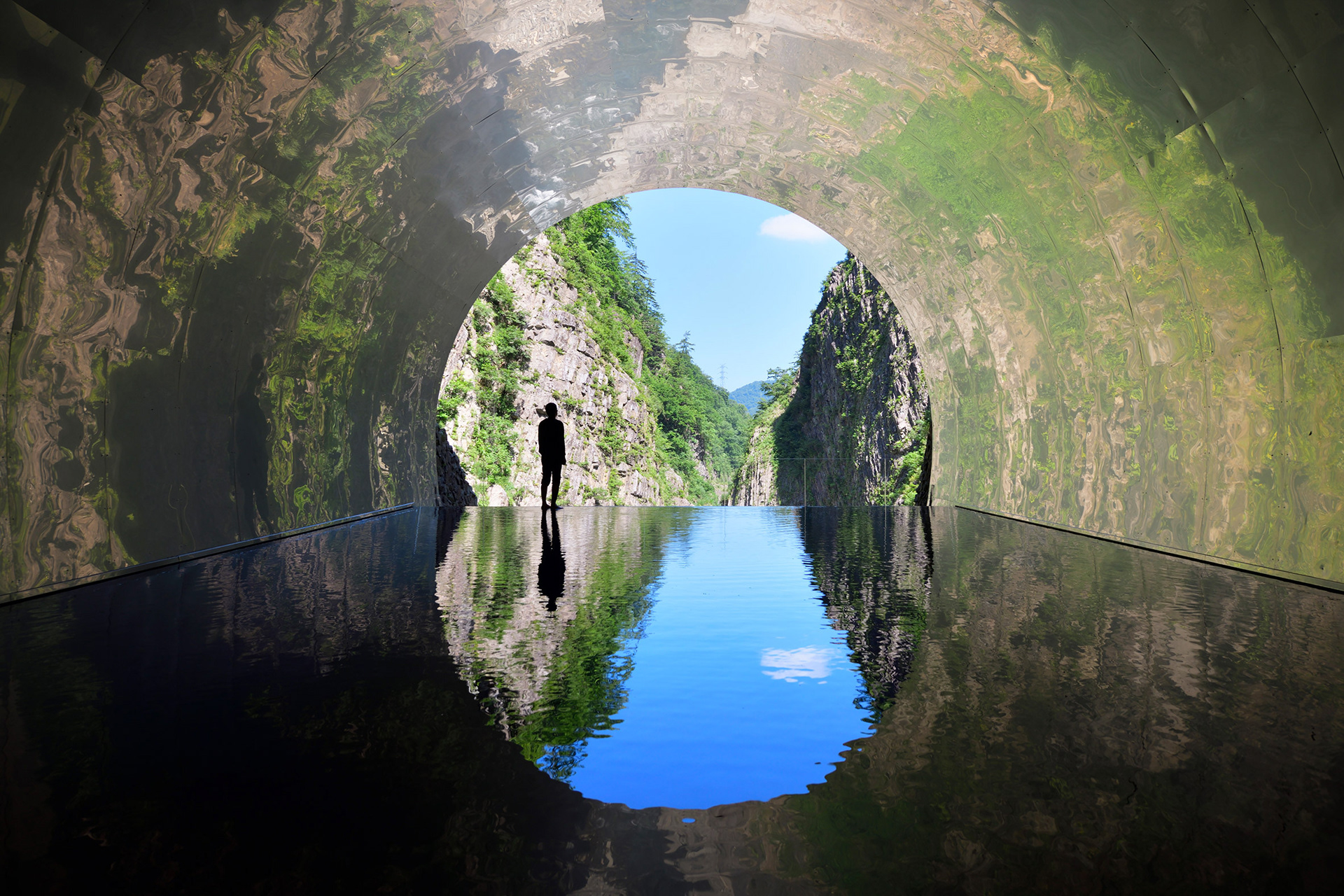
Cesar Manrique & MAD
Cesar Manrique’s Architecture is synonymous with working with nature and bringing it into his designs. The way he balances the light and the natural elements is something I’ve tried to encompass in my proposal.
One of my precedents was this building in Japan by MAD. They way it connects with the outside, the play with water and how it draws the colours of the valley in are all elements I was looking to include. To give a feeling of experience whilst inside the space.
https://icondesign.it/places/casa-studio-lanzarote-cesar-manrique/
https://www.dezeen.com/2018/08/08/kiyotsu-gorge-tunnel-japan-mad-echigo-tsumari-triennale-2018/
Light experiments - 20/11/19
Focusing on the inside of the space I wanted it to feel as magical as the pool, utilising the reflections and light I had seen in my early visits. To understand how I could make this happen I made some light models. My goal was to make the reflection from the water dance on the ceiling of the space giving it that magical alive feeling that the pool has. As the space would be dark this would be accentuated further.
Seaweed blocks round 3 - 20/11/19
With the feel of the proposal starting to come together I returned to seaweed brick refinement! Due to the storms I only managed to harvest Serrated wrack on the last trip but this change also brought a improvement to the results. Once boiled down the wrack produced a thick glucose like liquid similar to molasses. This helped to bind the bricks together and allowed me to steer clear of baking the bricks as I wanted to expend as little energy as possible while making them so they were all air dried once formed.
Final review 05/12/19
The final review was a chance to present where I had got to with the seaweed bricks but also with the project as a whole. It had been down many paths to end up at the Compendium of stories, made from the materials of the place. The presentation was well received, with a few points coming to light such as finalising the project with some quality internal visuals, using the composite I had made in them and whether the material would need reinforcement?
I will look to address these over the coming week!
